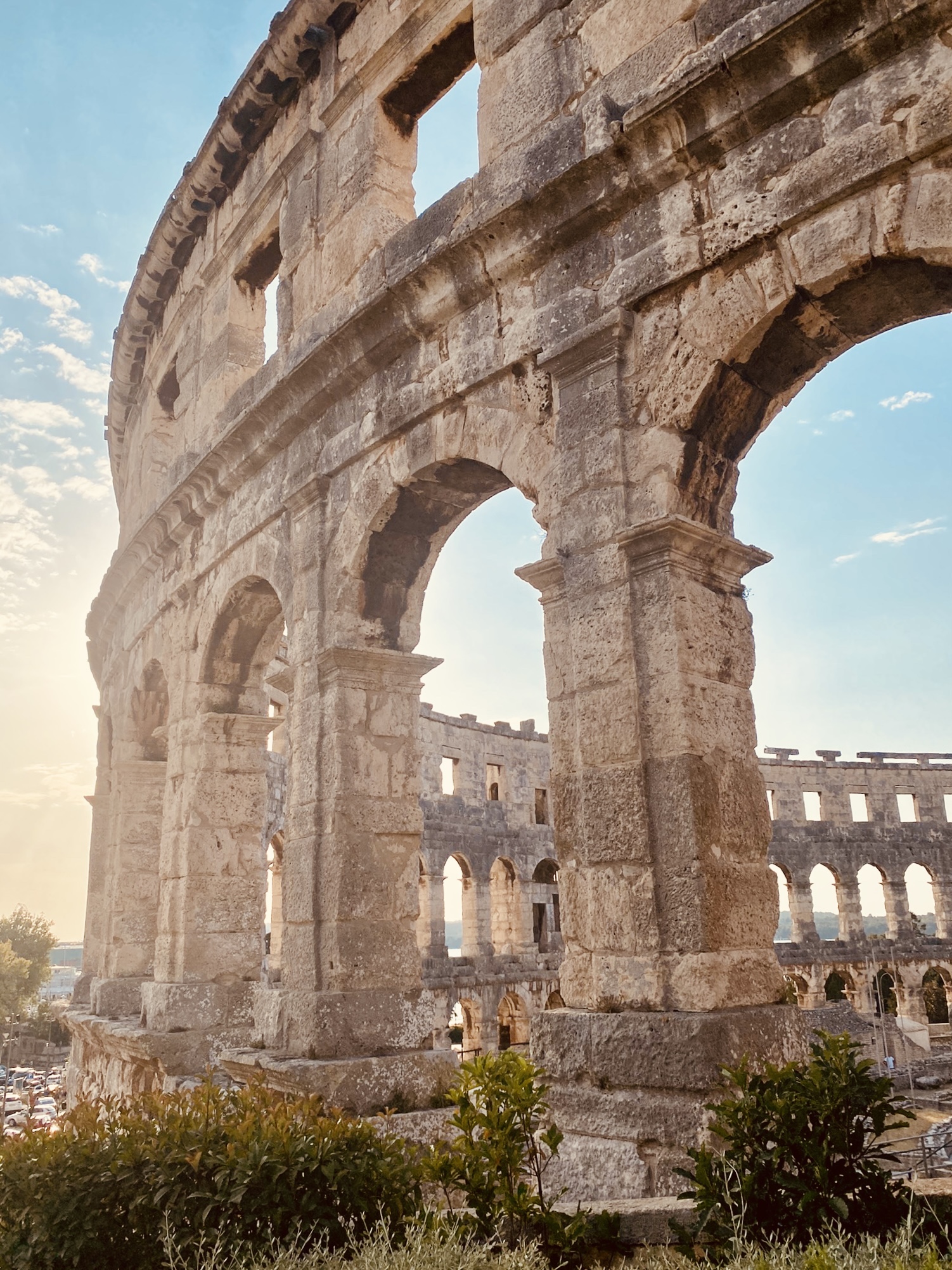
Following our time in London, we flew east to spend a few days in the northern portion of the former Yugoslavia, and then continue further to Bulgaria. This was our first flight in three months! We are traveling more but flying less compared to our pre-sabbatical levels.
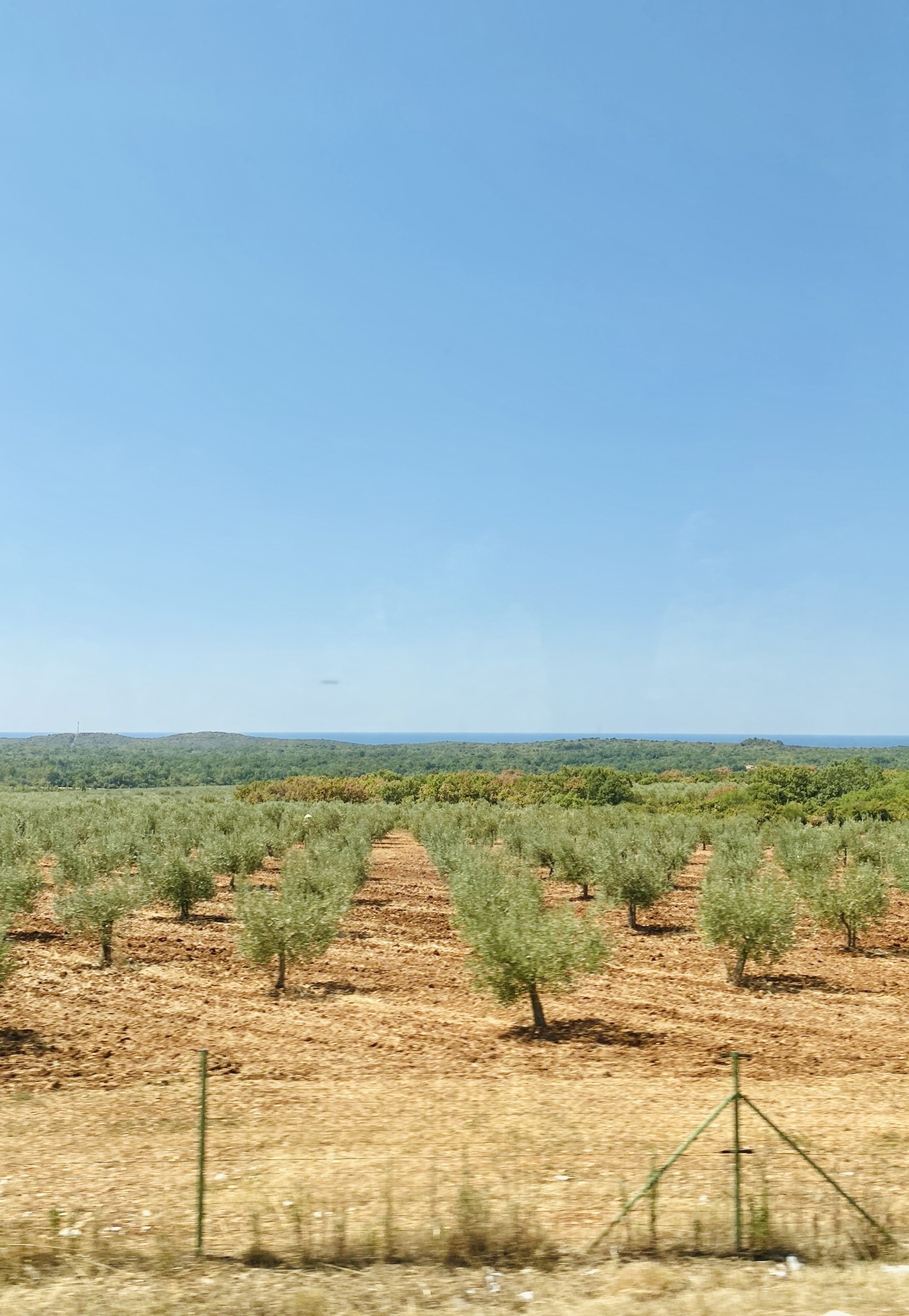
City highlights
Pula is a town at the southern tip of the Istrian Peninsula, which extends into the Adriatic Sea. The Istrian Peninsula is comprised of the northwest portion of Croatia, the western coast of Slovenia, and the most-eastern portions of Italy. There is a long history of settlement on the peninsula, and the population has been governed by and influenced by many cultures over the centuries.
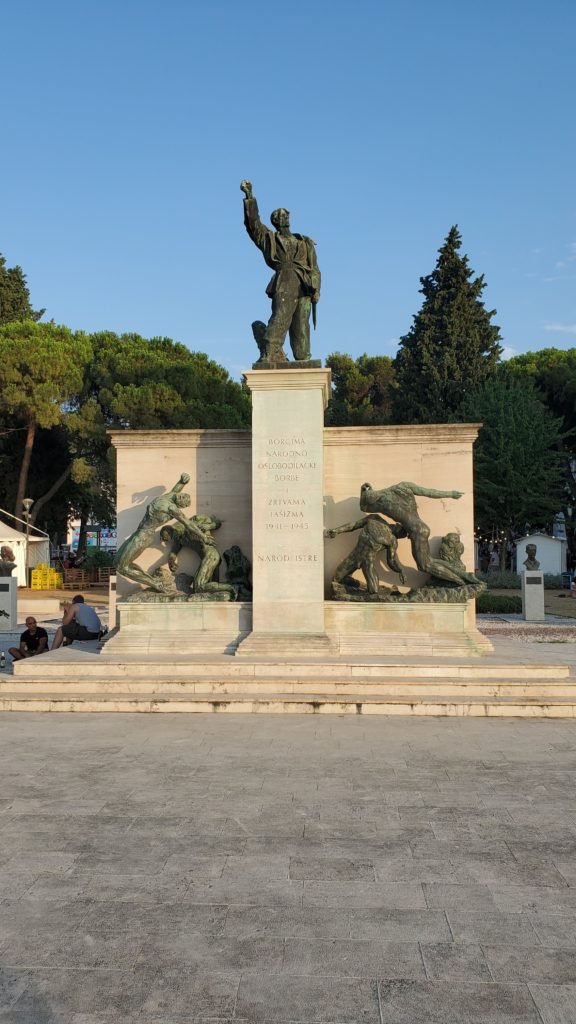
One of the highlights of the city is the Roman Arena. It was constructed contemporaneously with the Coliseum of Rome, but is significantly smaller.
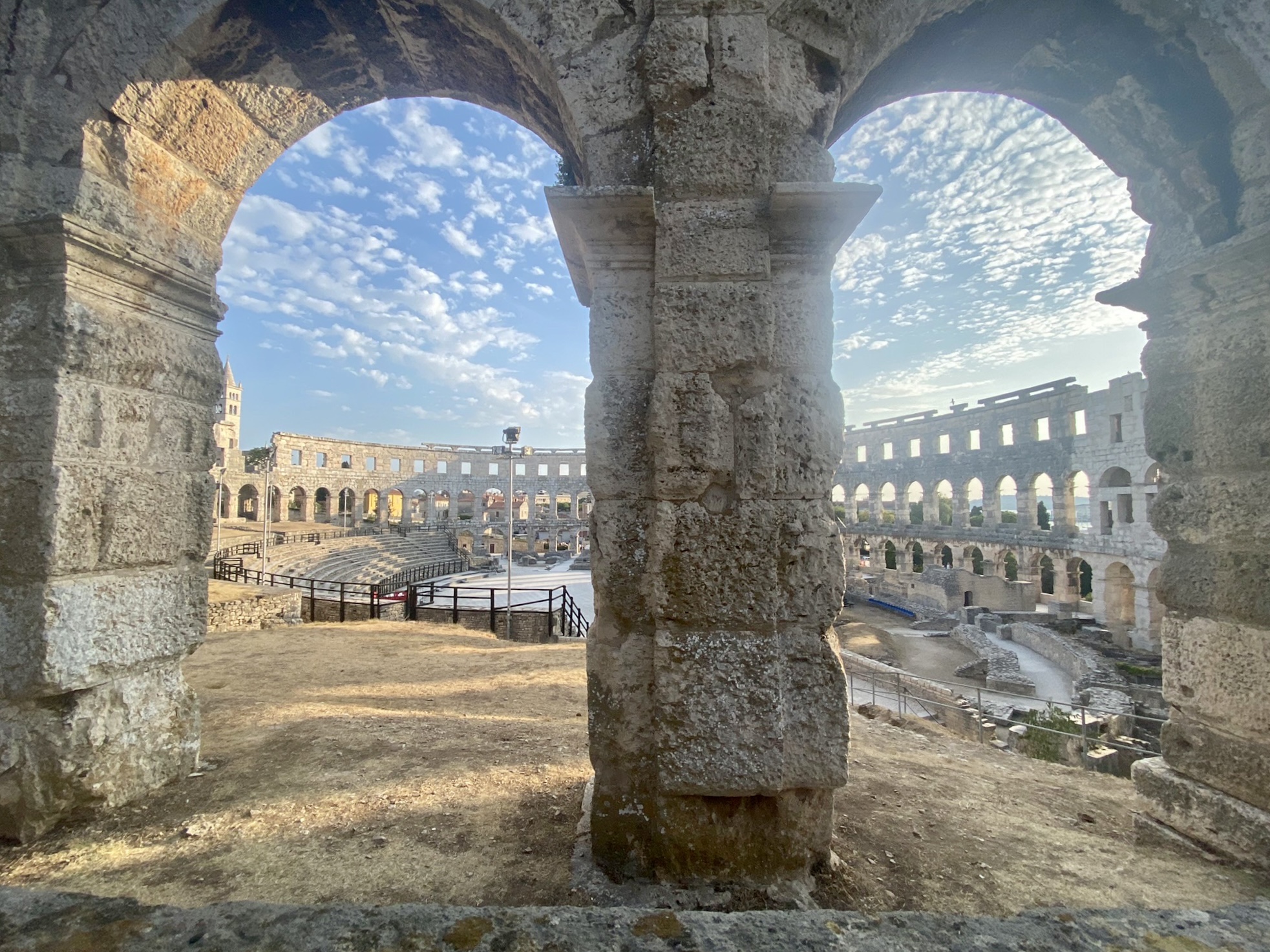
It is in ruins but the full oval structure remains intact, and the arena is still used as an outdoor venue that can hold around 5,000 spectators now. On the day we arrived, the Pula Film Festival was concluding with a showing of Gladiator on a giant screen. Tammy was bummed that we were not able to watch it. The Arena has regular concerts, and recurring exhibitions of gladiator battles. It was amazing to walk through narrow streets that then open up to 100-foot-tall arena walls which were partly constructed using the hillside.
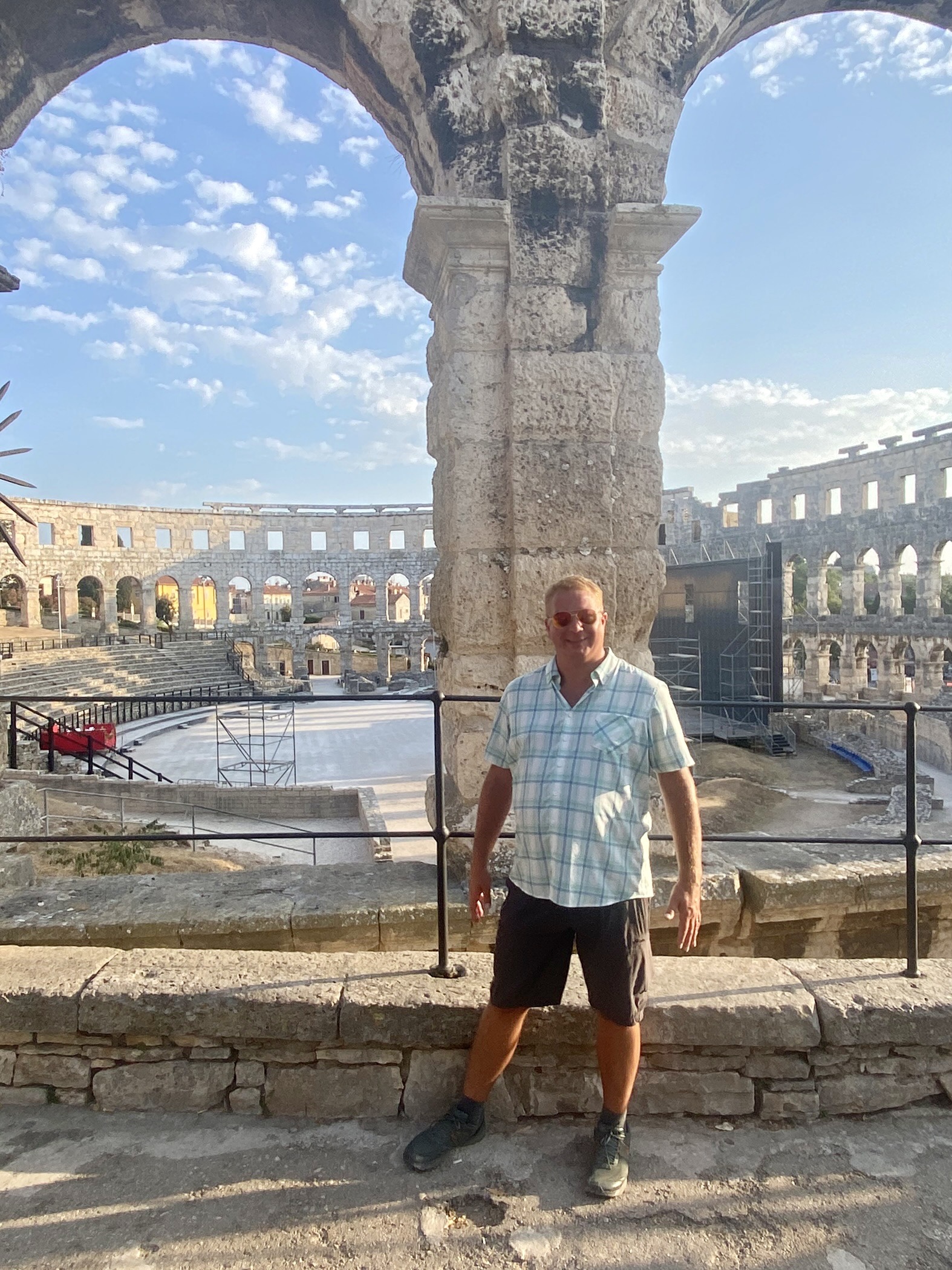
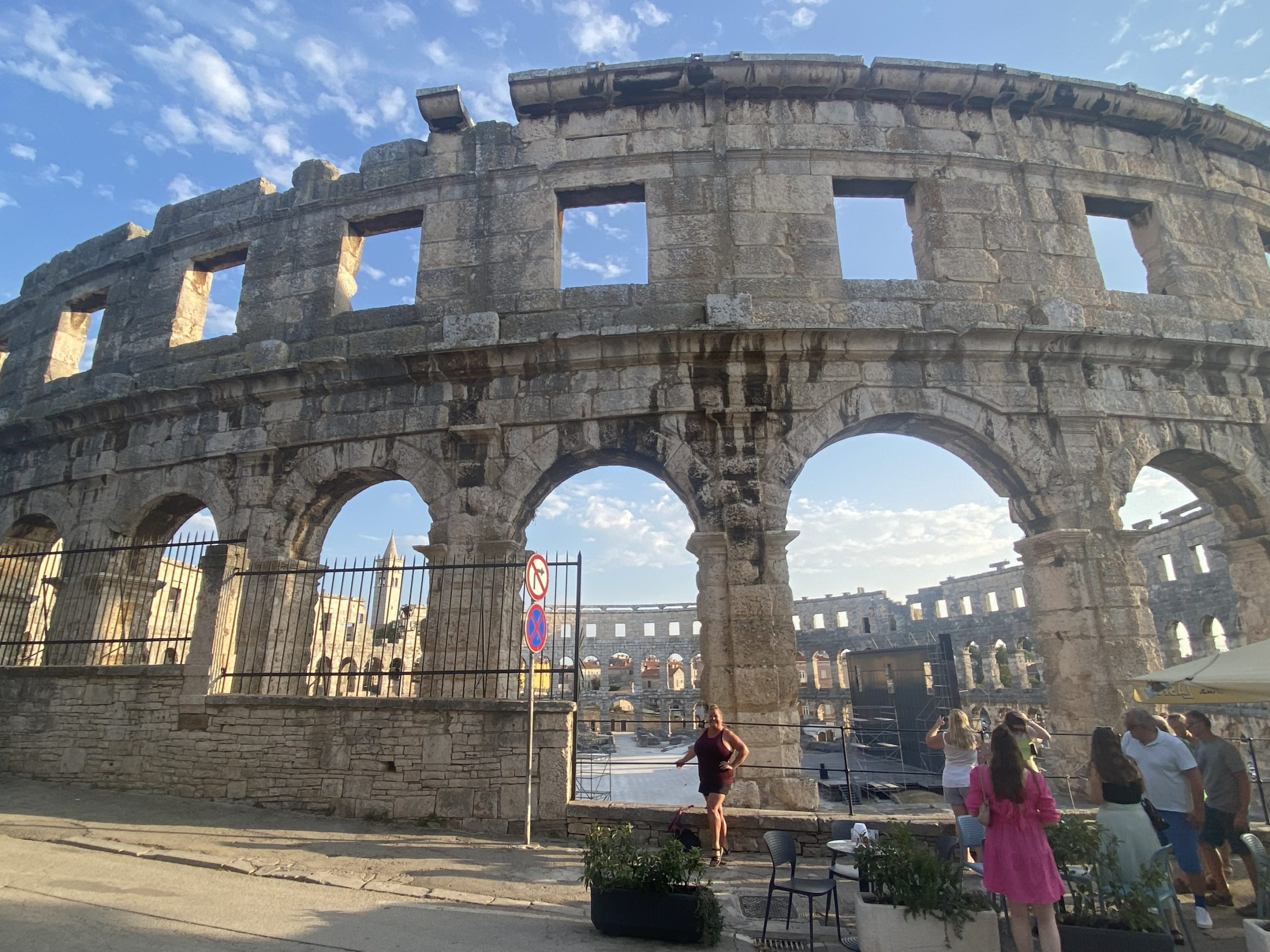
While circumnavigating the arena you are forced to climb the hillside. But at the top there are wonderful views of the sea and a cafe set up for sunset cocktails. Sadly, we also missed out on that opportunity but we caught the gorgeous sunsets from other locations.
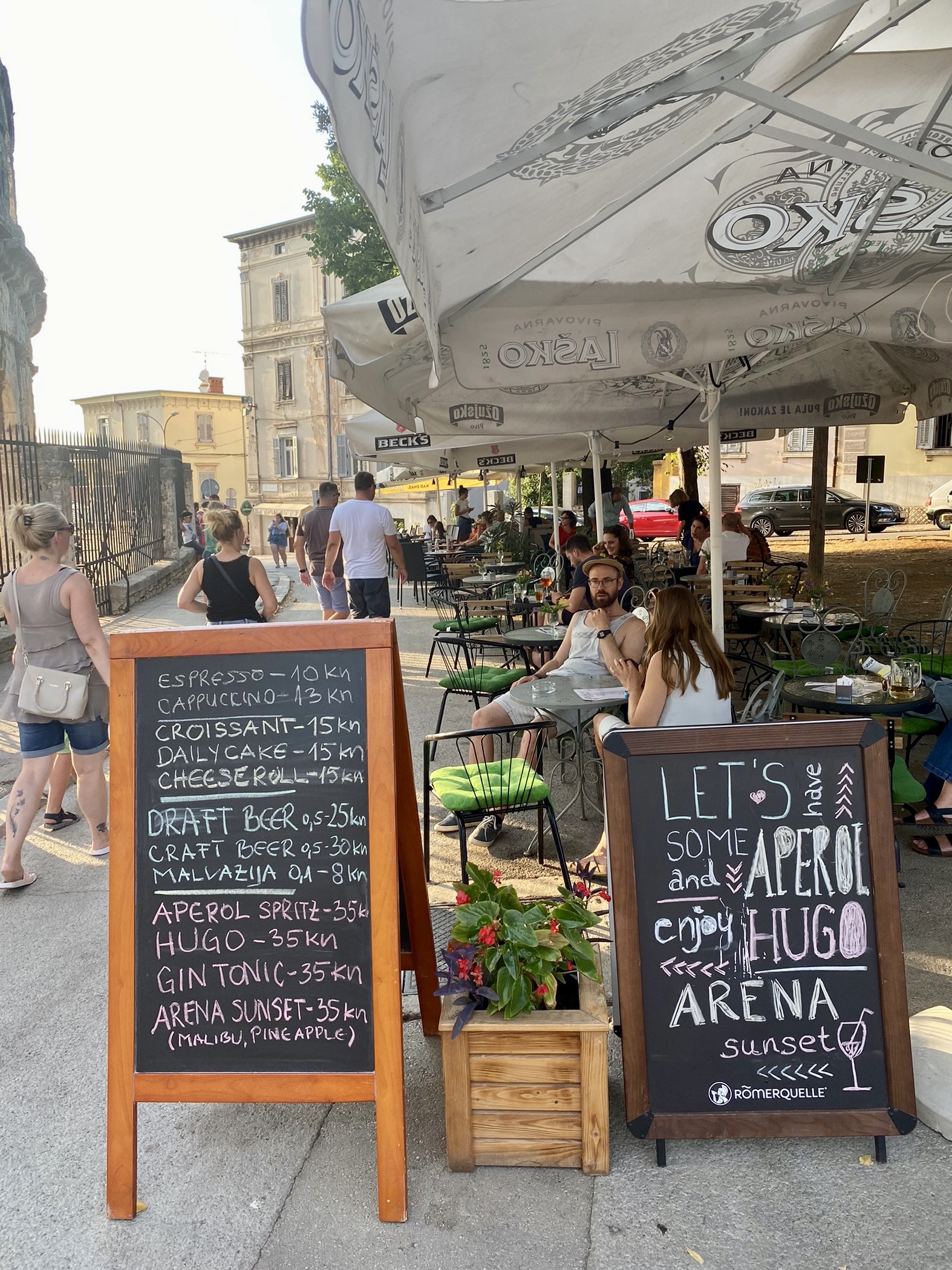
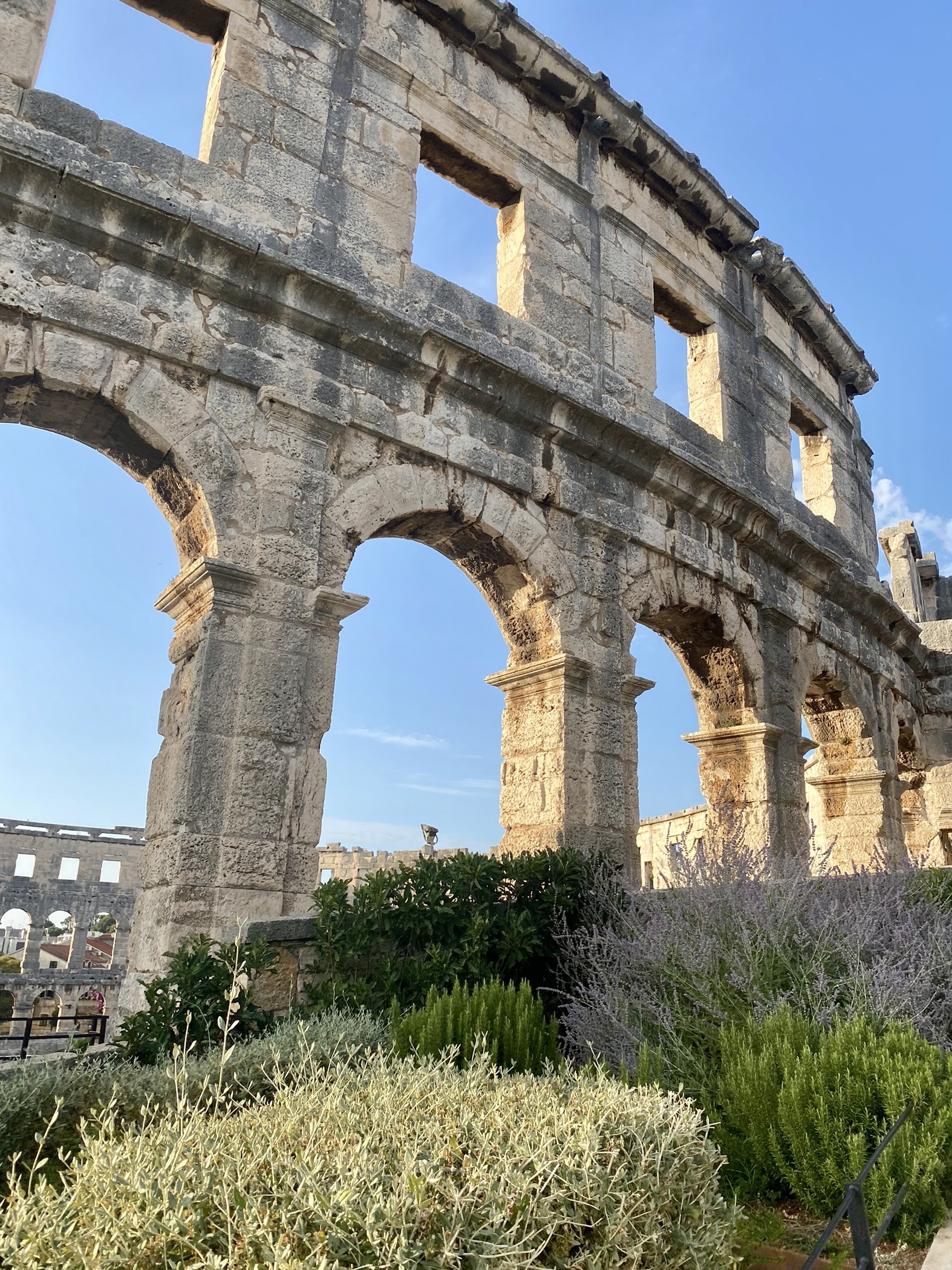
There are other elements of Roman architecture that have survived, including a number of arches, a temple to Augustus (although this was rebuilt after World War II), and remnants of the ancient city walls.
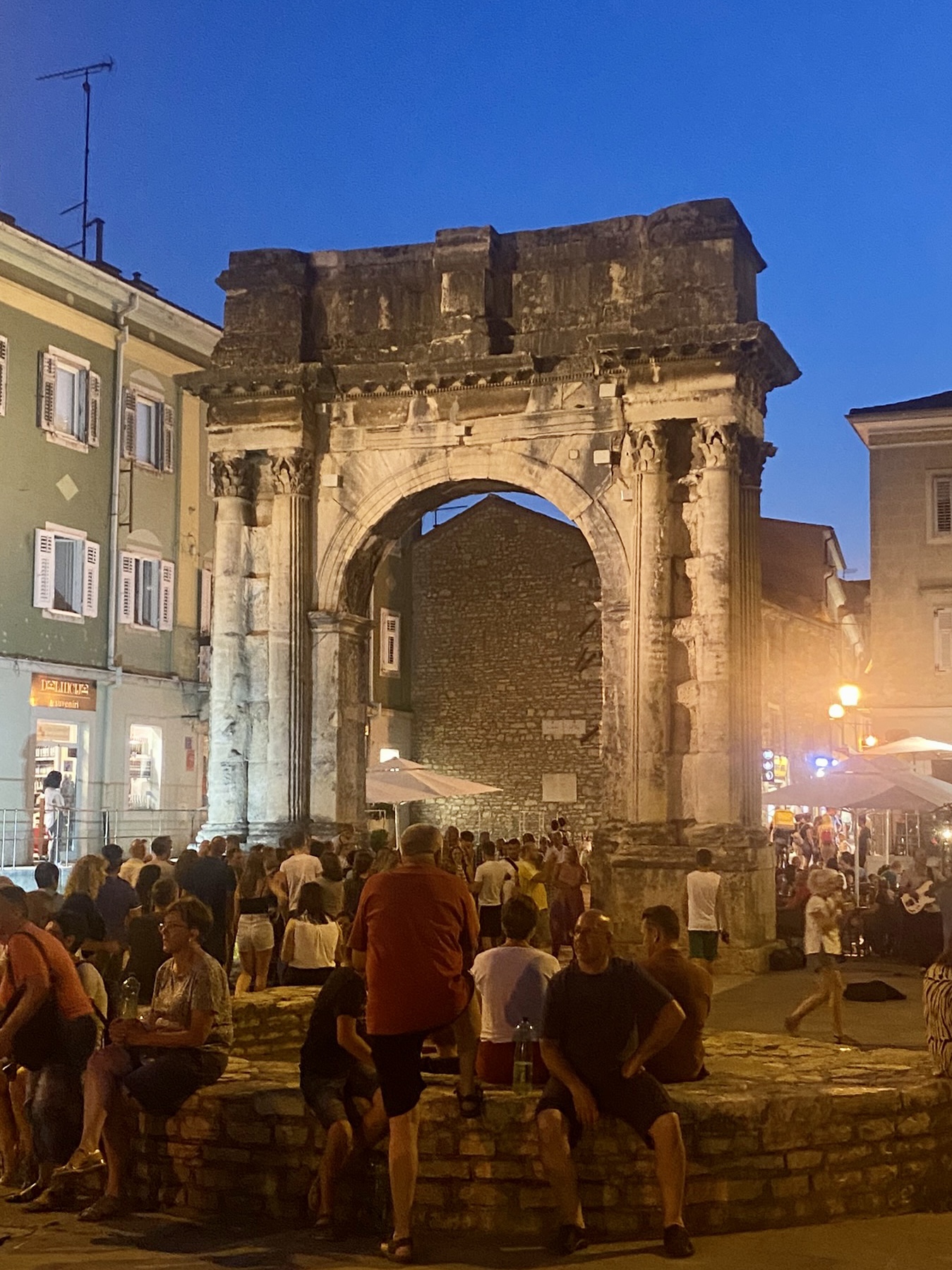
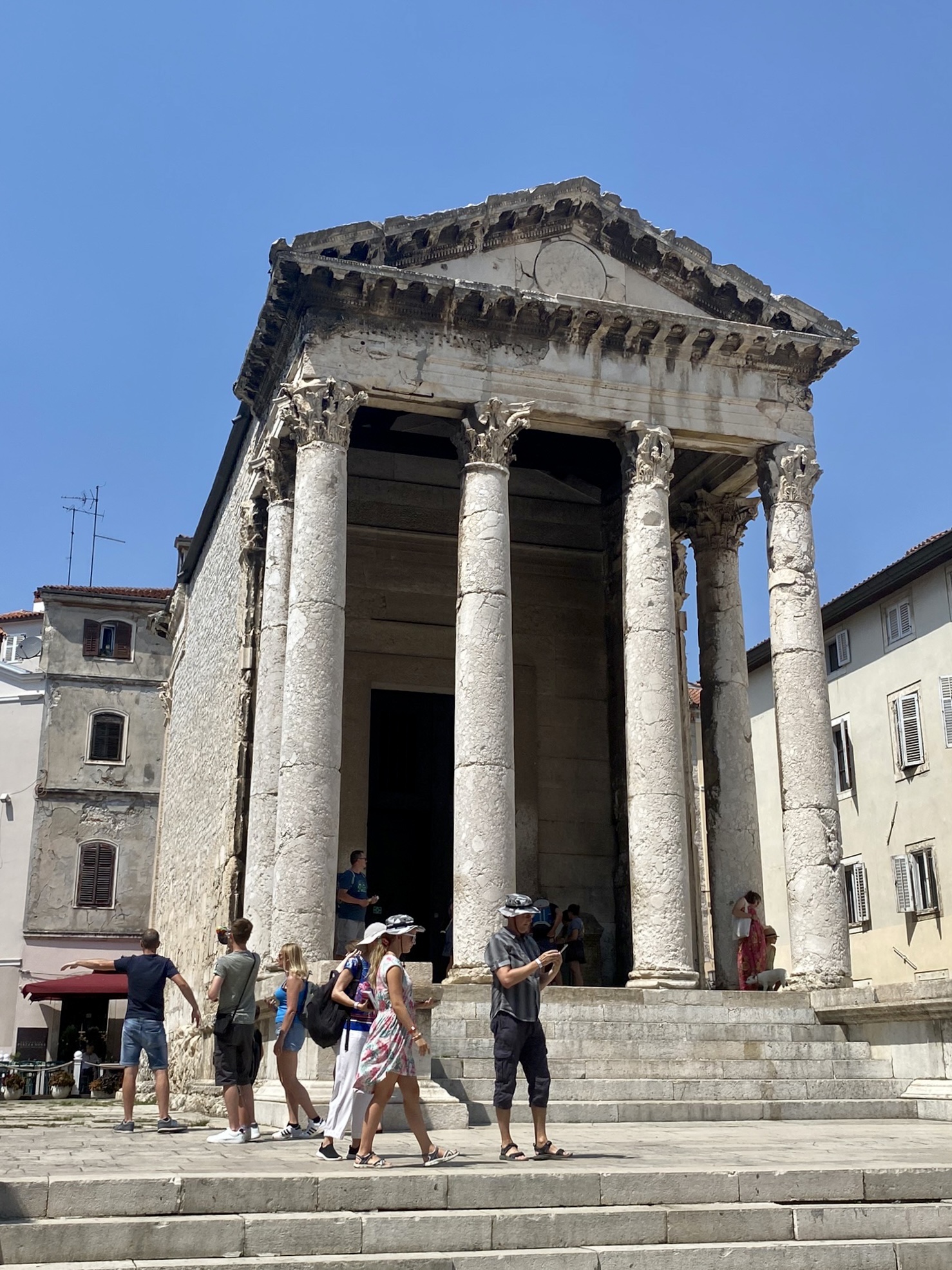
A hill in the center of the city has been the site of fortifications throughout history. The current Kastel dates back to the 1600’s.
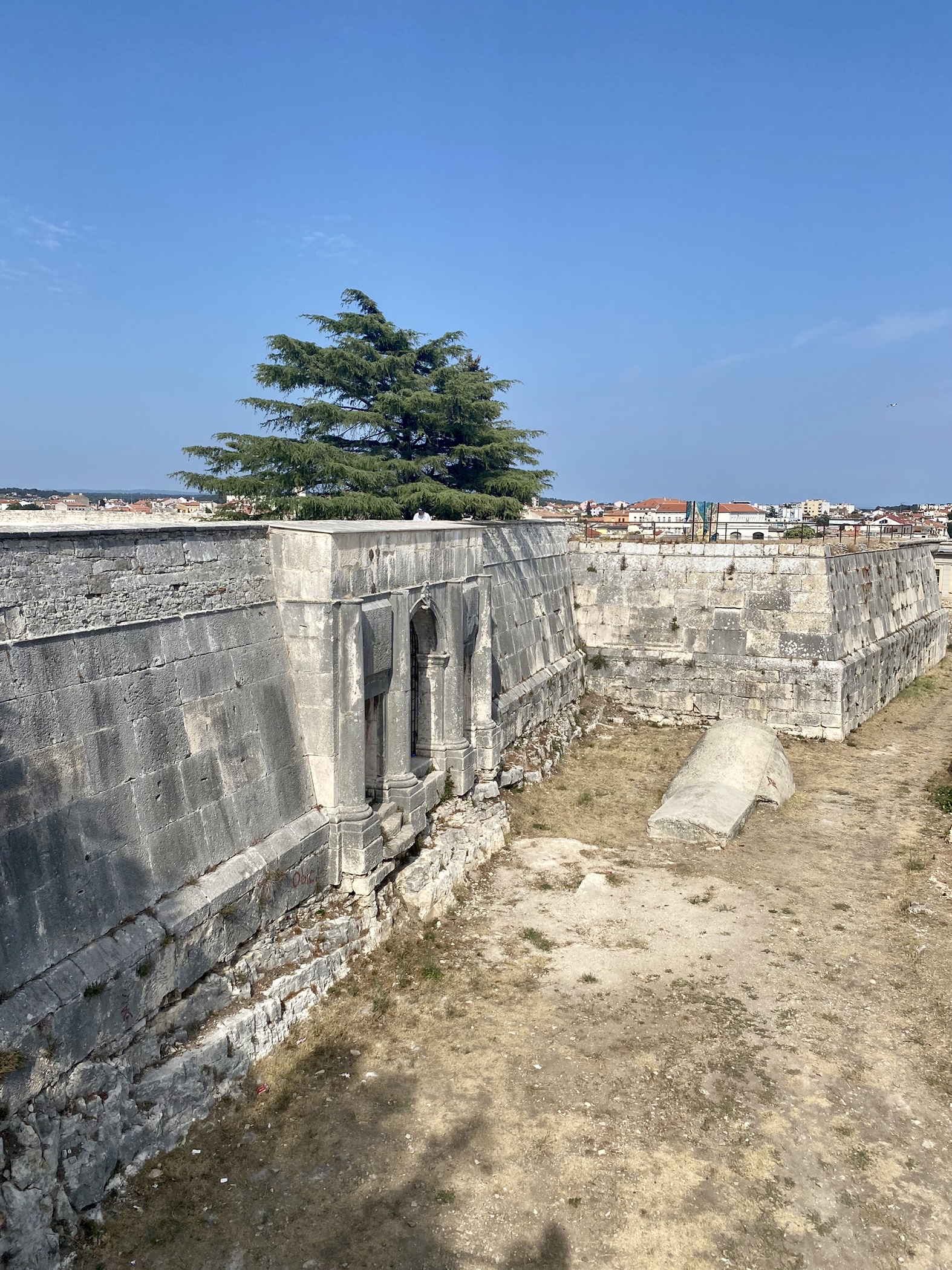
You can walk on the roof of the Kastel and have the same expansive views of Pula that the defenders of the town had.
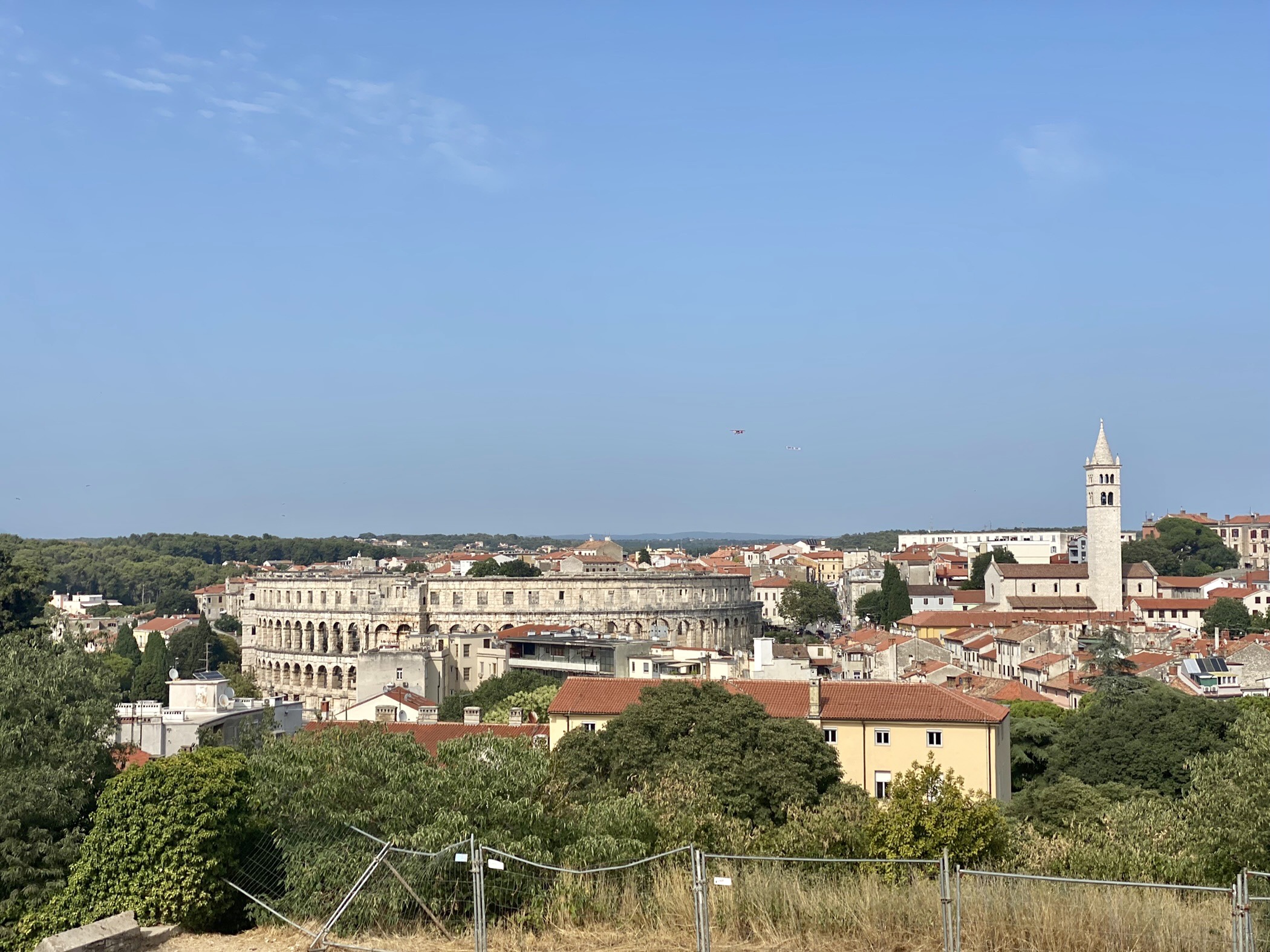
There was an exhibit called Fort Center that showed information on the construction of the Kastel, as well as other ancient forts around the Pula area. It also showed photographs and other information on life as a garrisoned soldier in Pula. It was interesting and shed some light on why Pula has been an important military site, and how various powers worked to keep the town in their possession.
During and between the World Wars, the Austro-Hungarian and then Italian governments dug through the Pula hills to create a series of tunnels that could be used as bomb shelters for the town’s population. Portions of these tunnels, called Zerostrasse, are available to walk through and explore. Since the temperature is naturally cool, it is also a way to walk across town and avoid the heat!
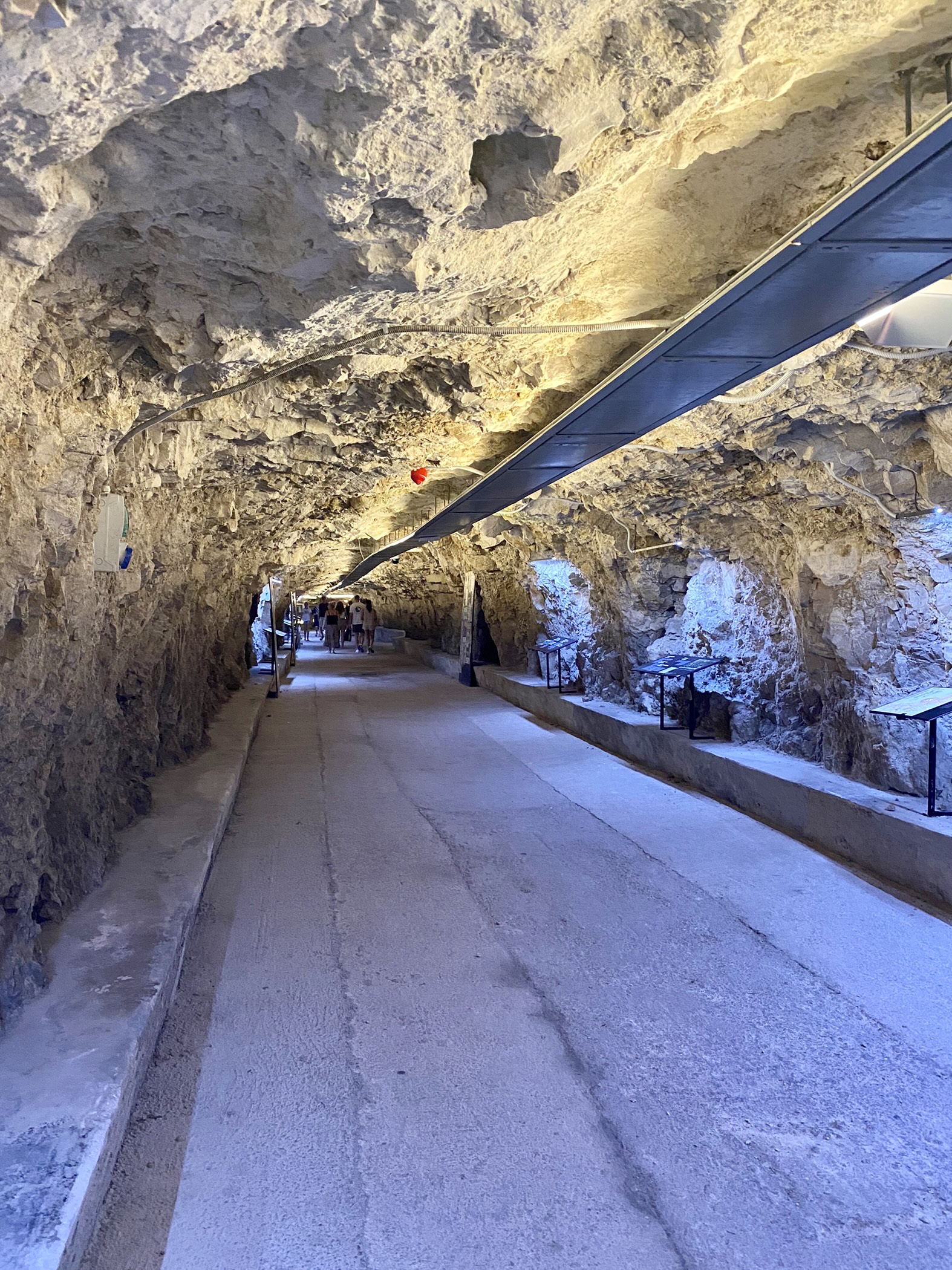
Areas of the Kastel and Zerostrasse are used for exhibititions. The tunnels featured an exhibit on the early 1900’s electric tram system that the Italian government installed.
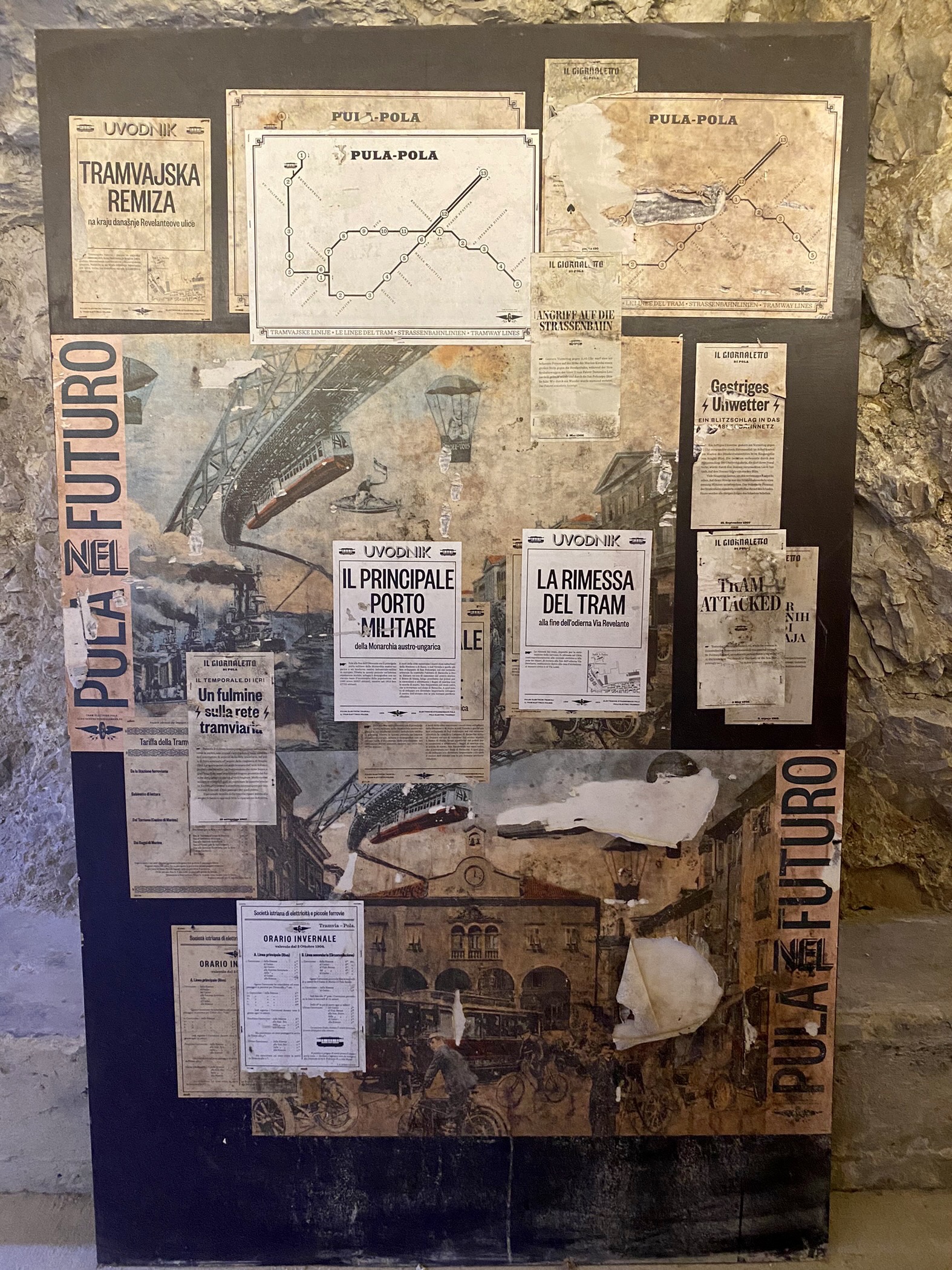
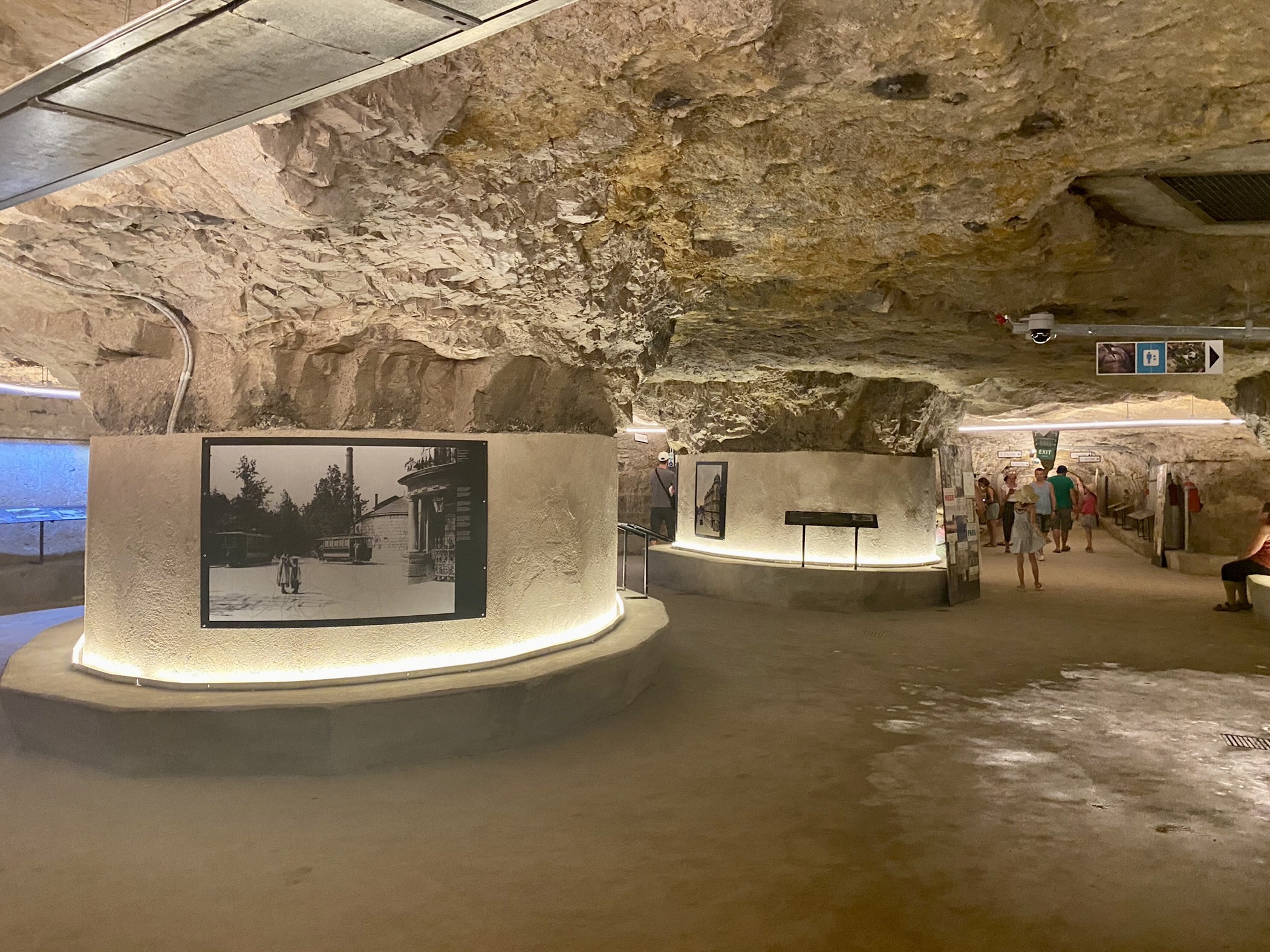
What we felt was lacking in Pula, including at the Kastel/Zerostrasse, was signage to indicate and describe what we were actually looking at. The city is full of history and sights, but be prepared to do outside research to find locations and put everything into context.
The beaches
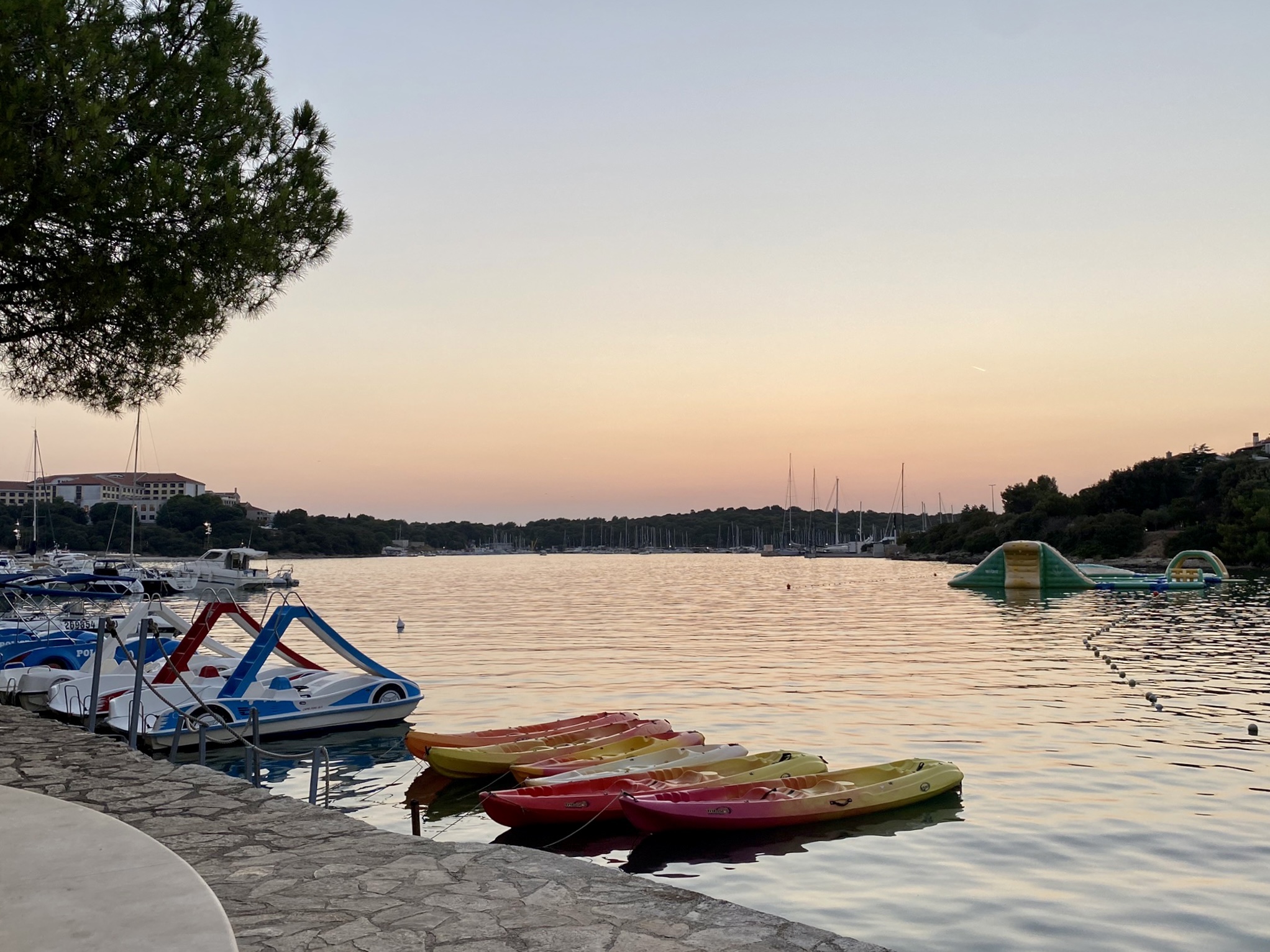
Pula’s coastline consists of a number of smaller peninsulas that jut into the Adriatic Sea. Beaches abound and are a consistent feature. We spent a couple days exploring the Verudela Peninsula, just south of town since it was close to our Airbnb. It is a forested area that has about a dozen named beaches, a number of facilities and hotels, and the Aquarium.
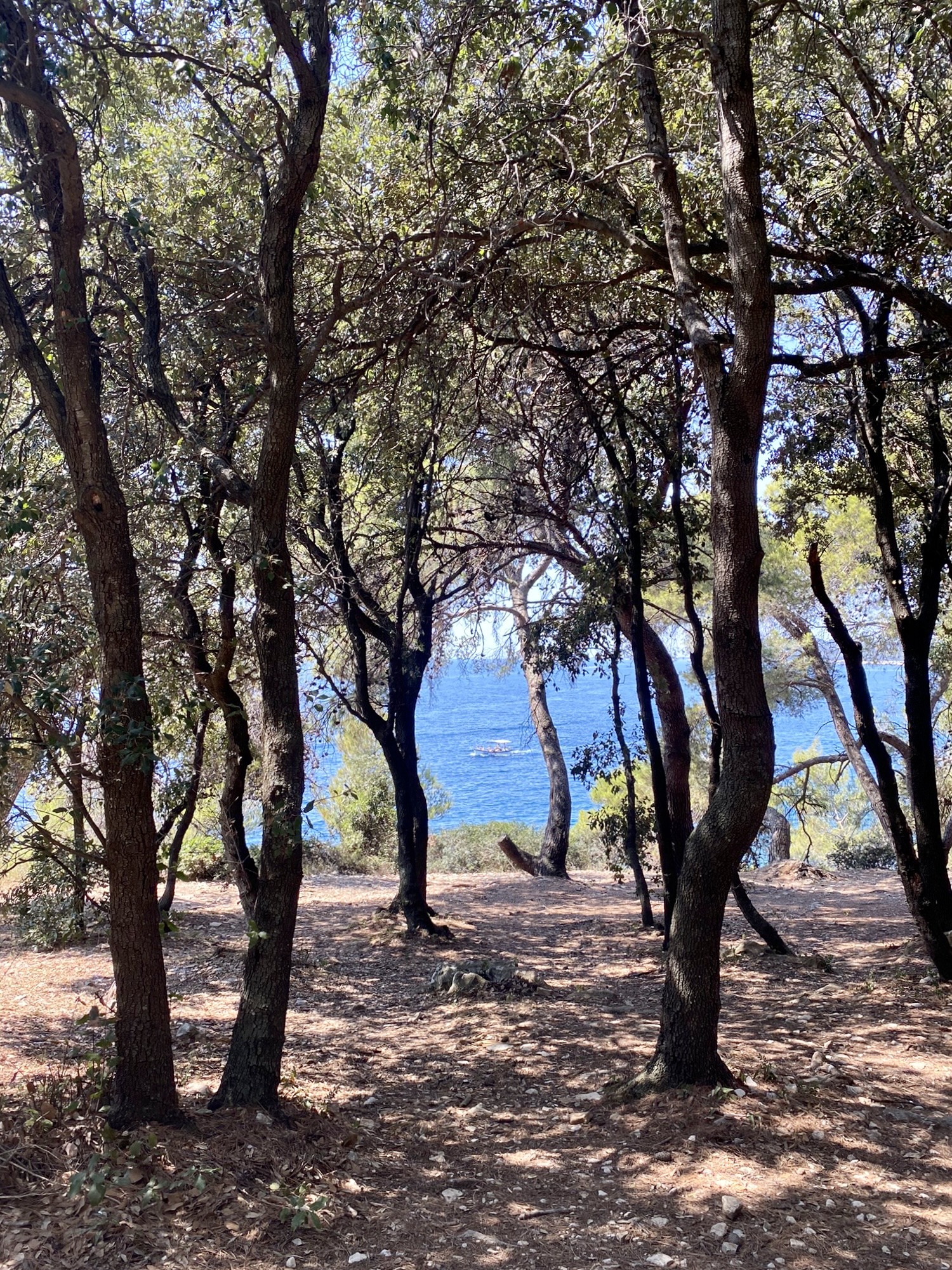
Further north is another peninsula with beaches. Go past the marina to the east and there is another beach area and beach neighborhood. There is something for everyone, unless you are looking for sand!
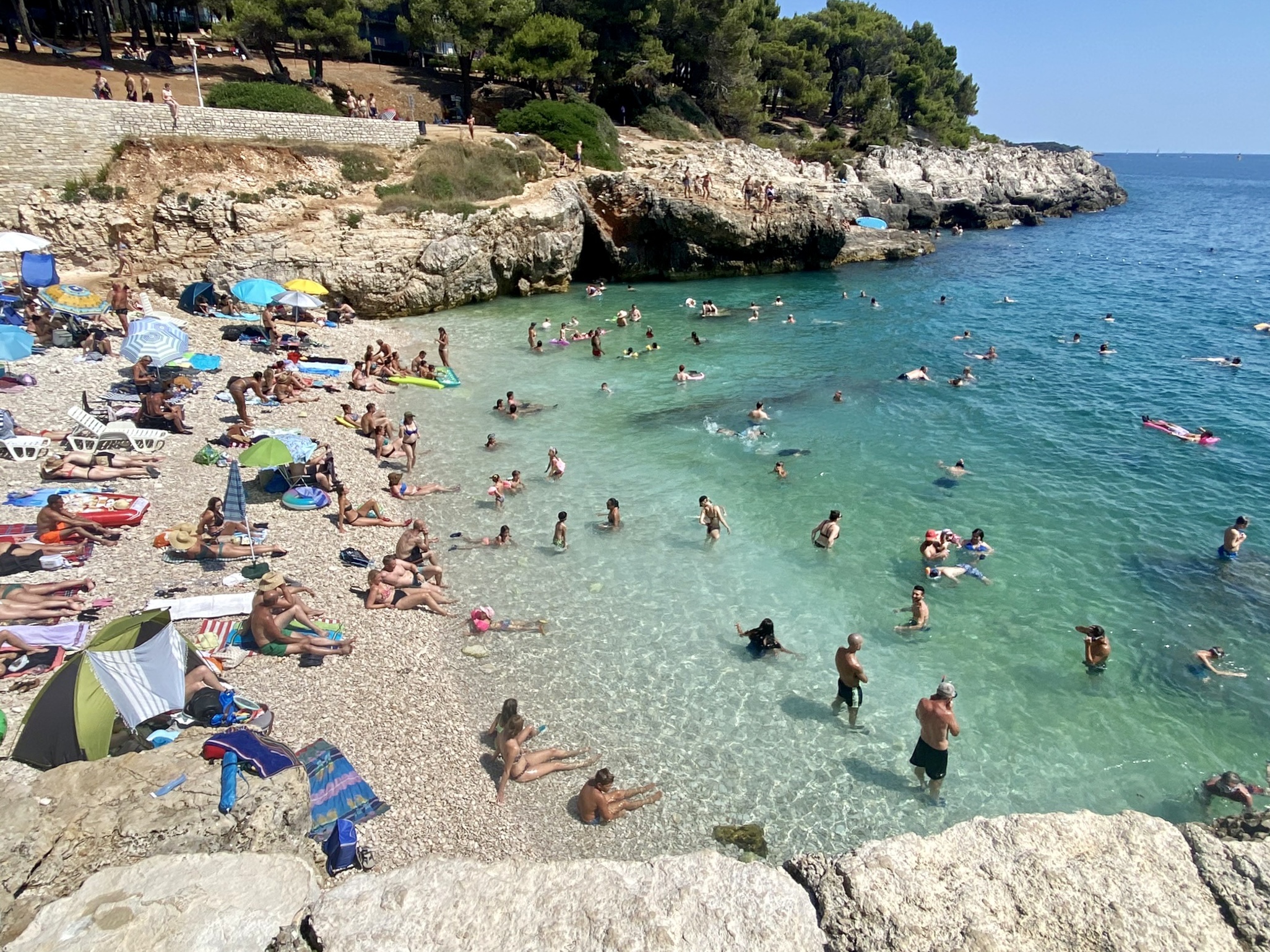
All of the beaches we found were rocky in some fashion: pea gravel, smooth stone, or flat rock outcroppings. The locals say that the clear sea is a product of not having sand/sediment in the water. They also use yoga mats or bring chairs so they can avoid laying directly on the rocks. The swimming and the weather were quite pleasant, as there is a consistent breeze that comes from the sea.
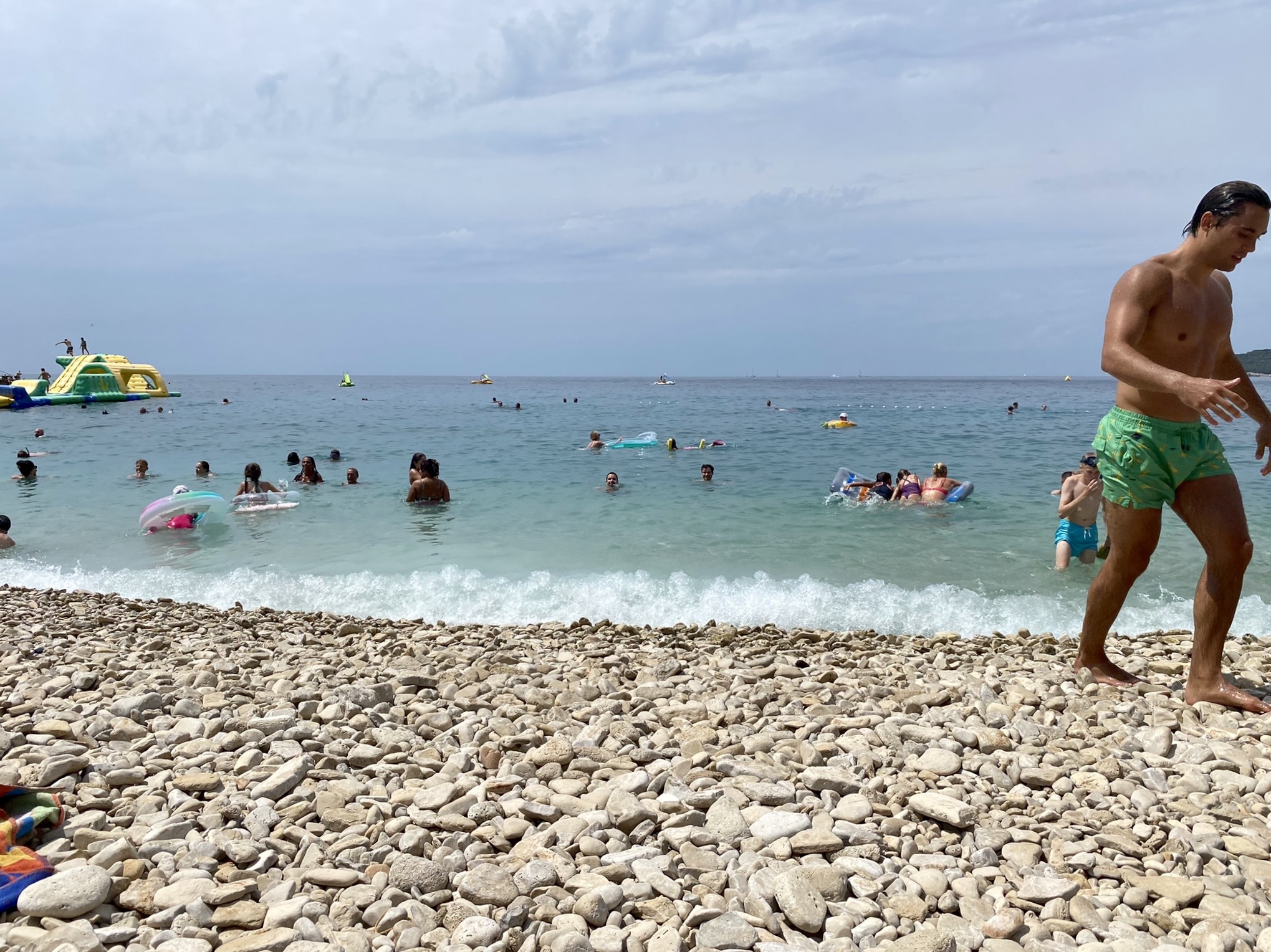
And the nearby forests provide plenty of shade, or shelter from a sudden thunderstorm and rain shower!
Filling up our bellies
Pula’s food scene is a delightful mix of Balkan meats and Italian pastas and pizzas. We especially enjoyed pljukanci, a hand-rolled fresh pasta that was served with a rich mushroom sauce.
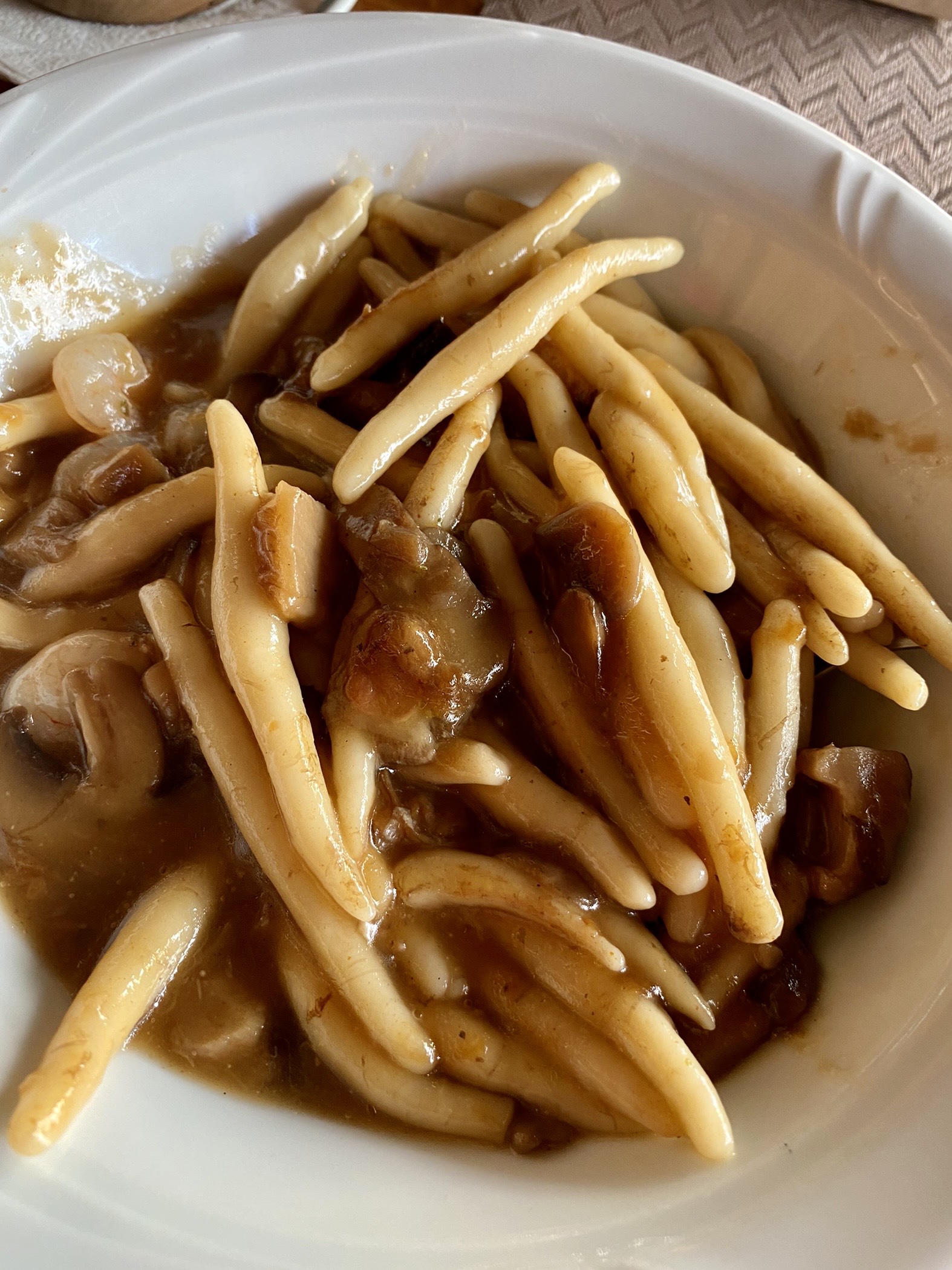
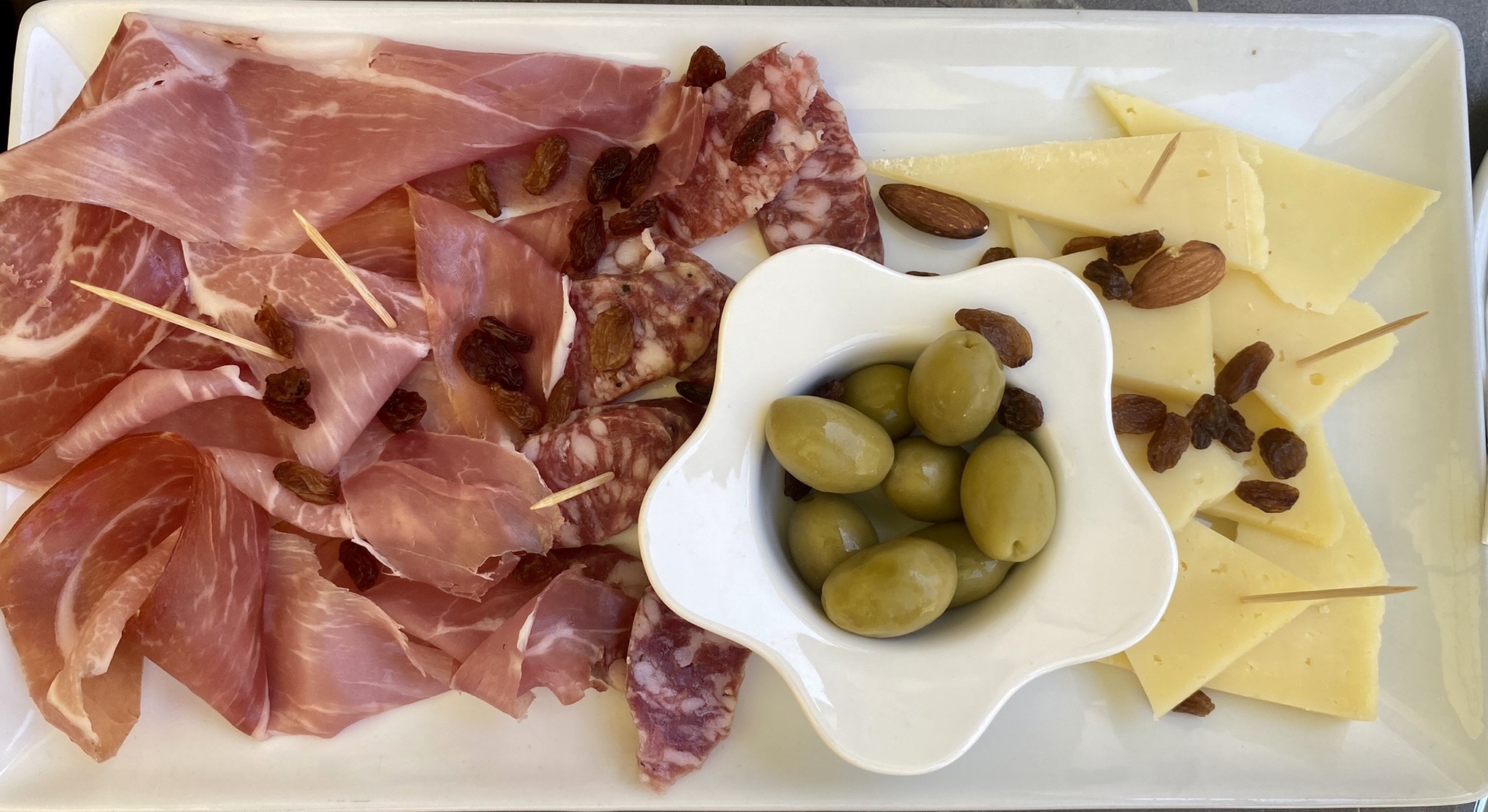
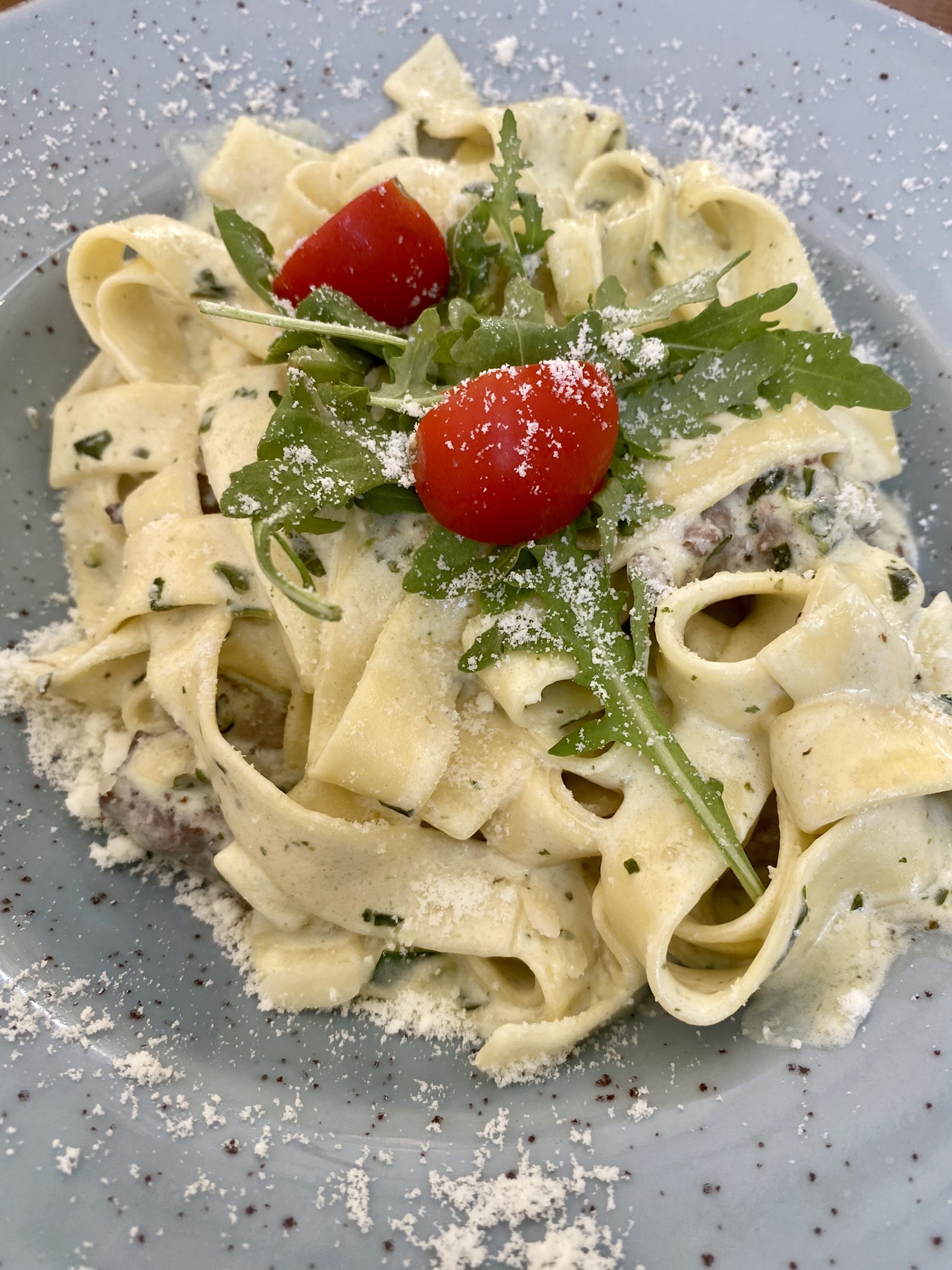
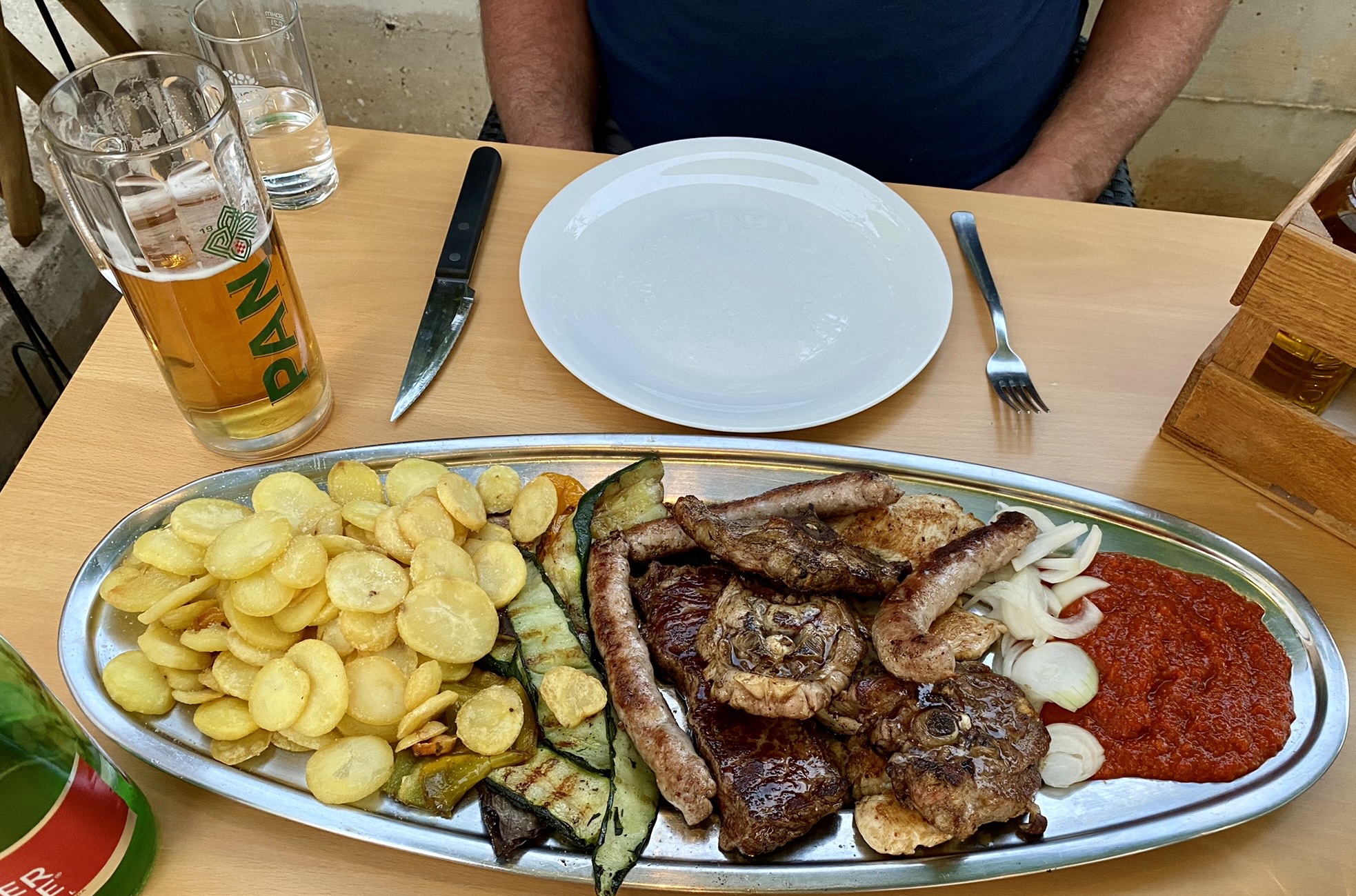
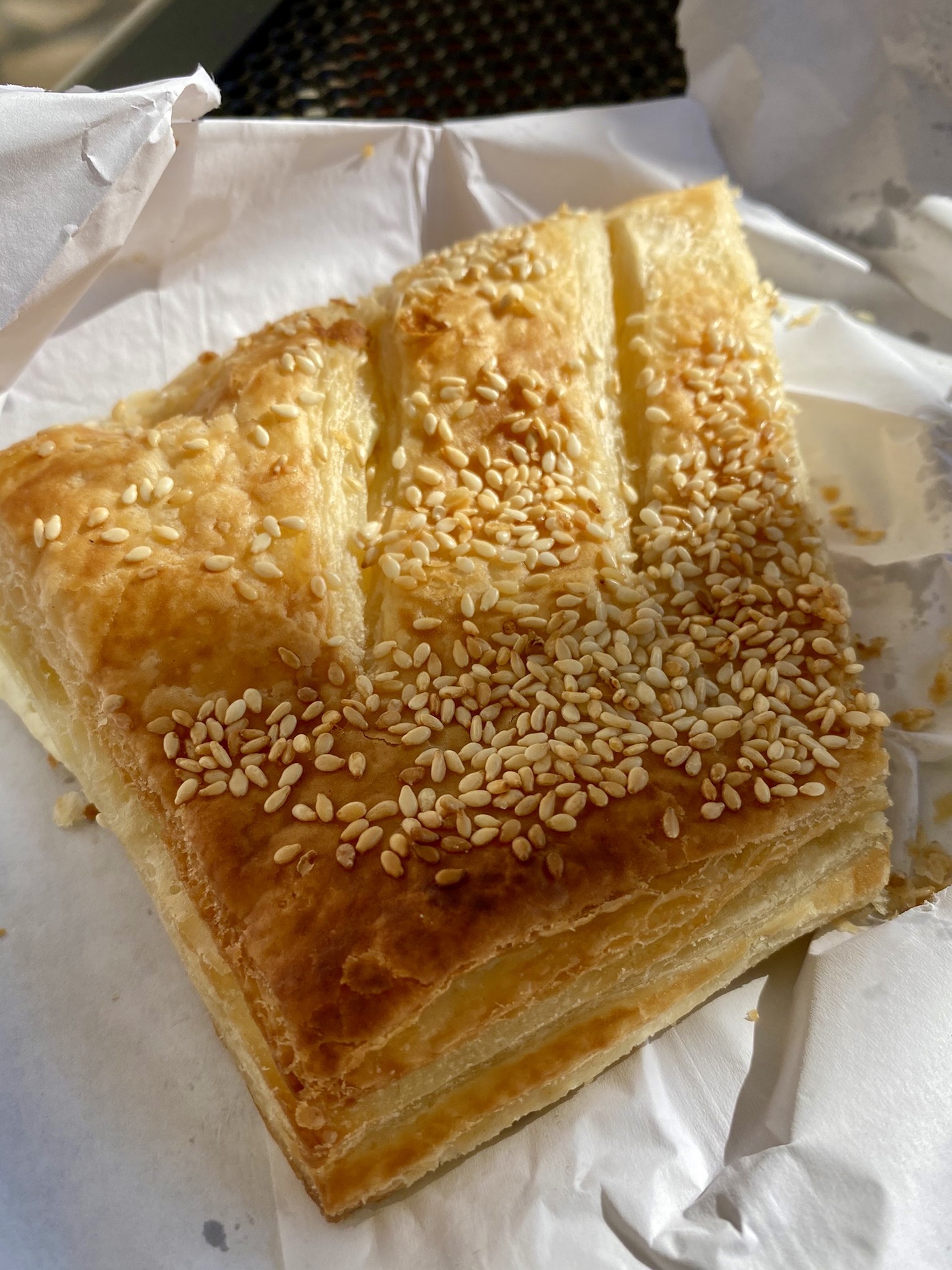
Geeking out on wine
Istrian wine is a similar (delicious!) mix to the food scene. Choosing wine can be confusing because of the number of local varieties as well as the local names used. The whites from Istria are often the fragrant Malvasia (locally spelled Malvazija) grape. Welschriesling (as grasevina; unrelated to riesling) is also common but generally produced from elsewhere in Croatia. A surprise for us was Firmint, grown in the north of Croatia (Medimurje) and bottled as Pusipel. This was almost always an outstanding choice.
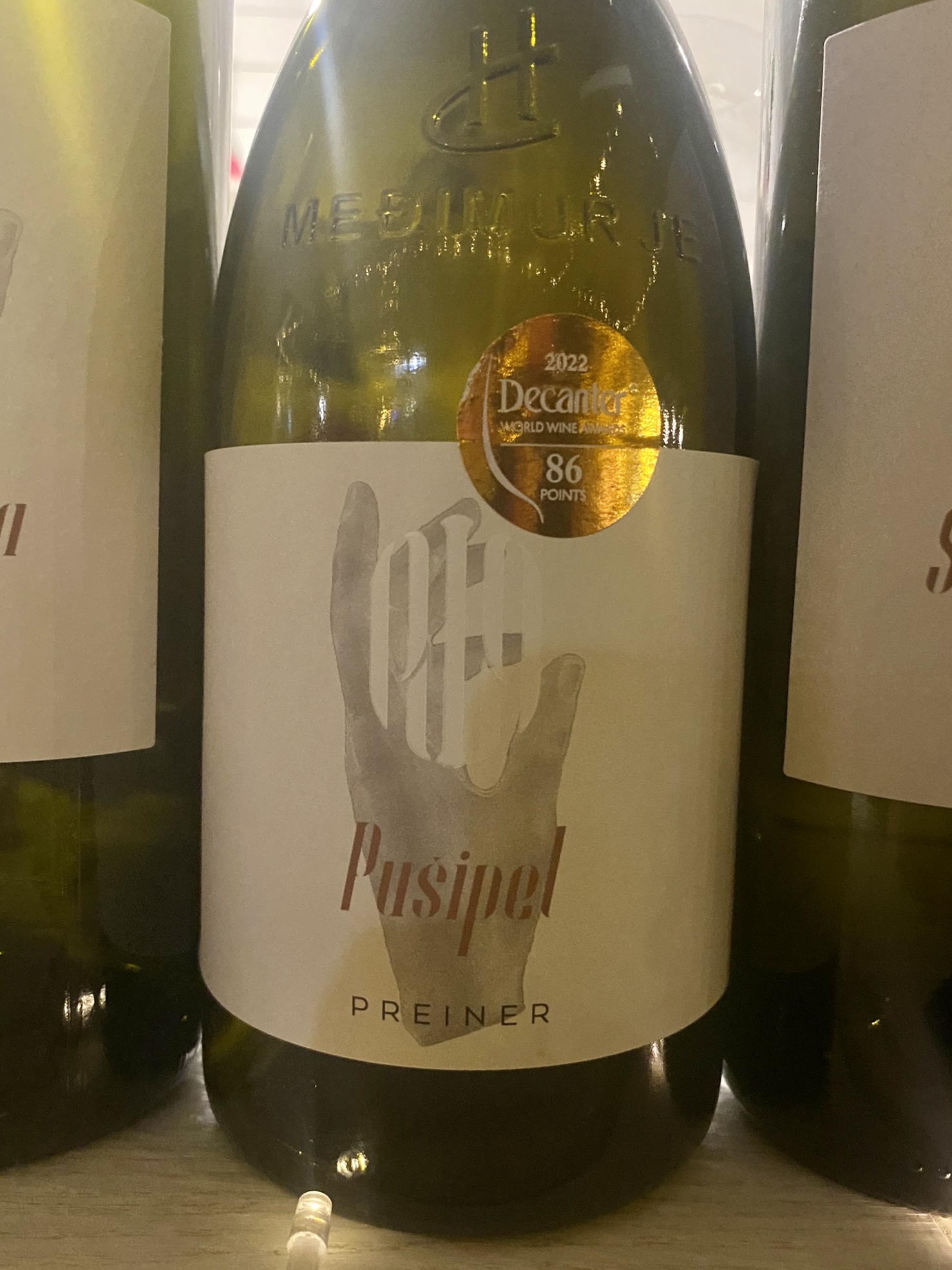
Reds are less common, but are typically the teran or refosco (refosc) grapes. Ignore the detail on these grapes and just know that you are likely to get a simple and refreshing red, possibly with a slight chill.
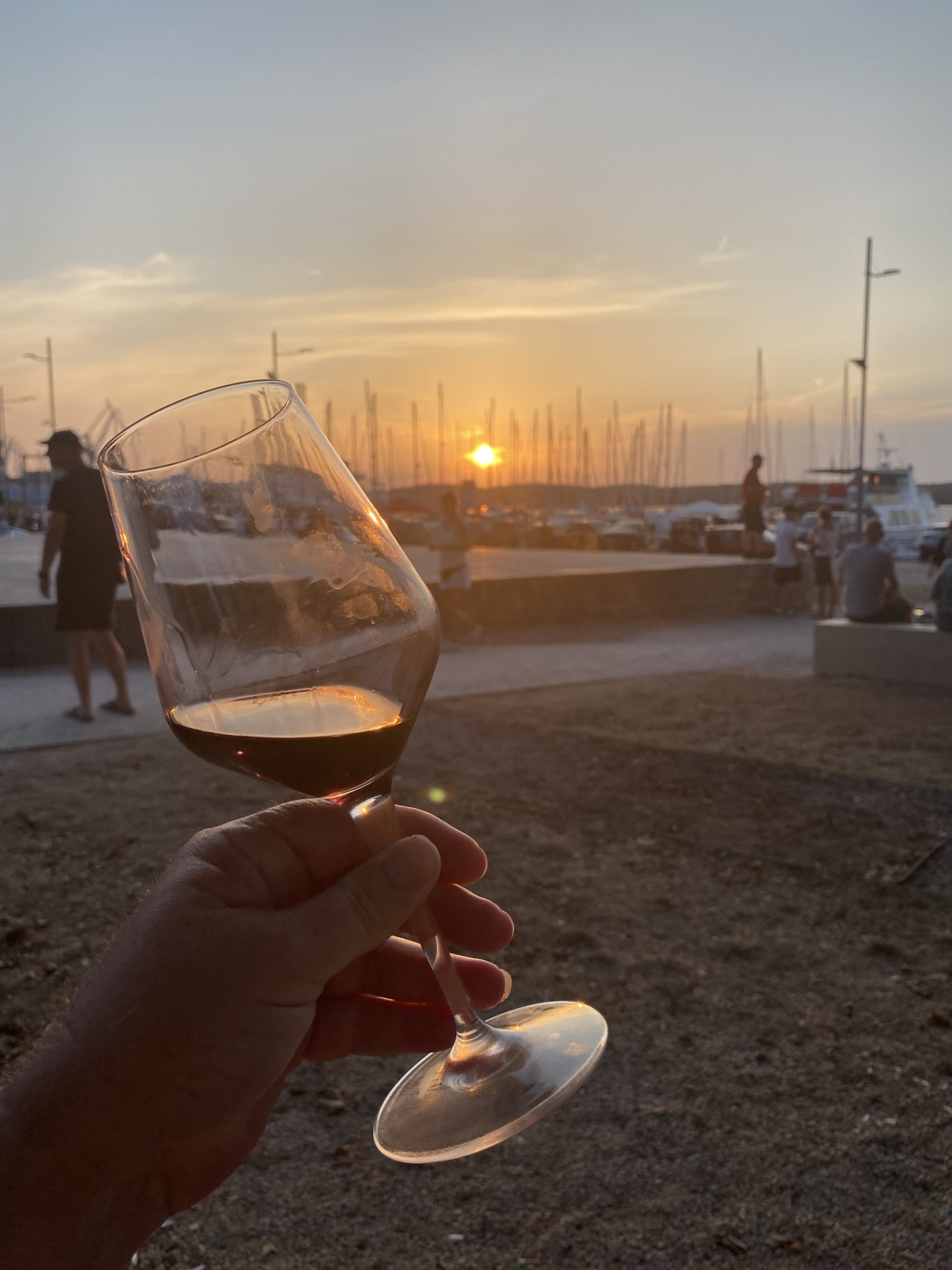
We lucked into being in town for Pula Wine City. For two weeks every summer, a downtown park holds a wine festival nightly from 7 PM to 12 AM. As the sun sets and the temperature gets more comfortable, people dress in smart casual, pick up their stemware, and flock here for a fun and social scene.
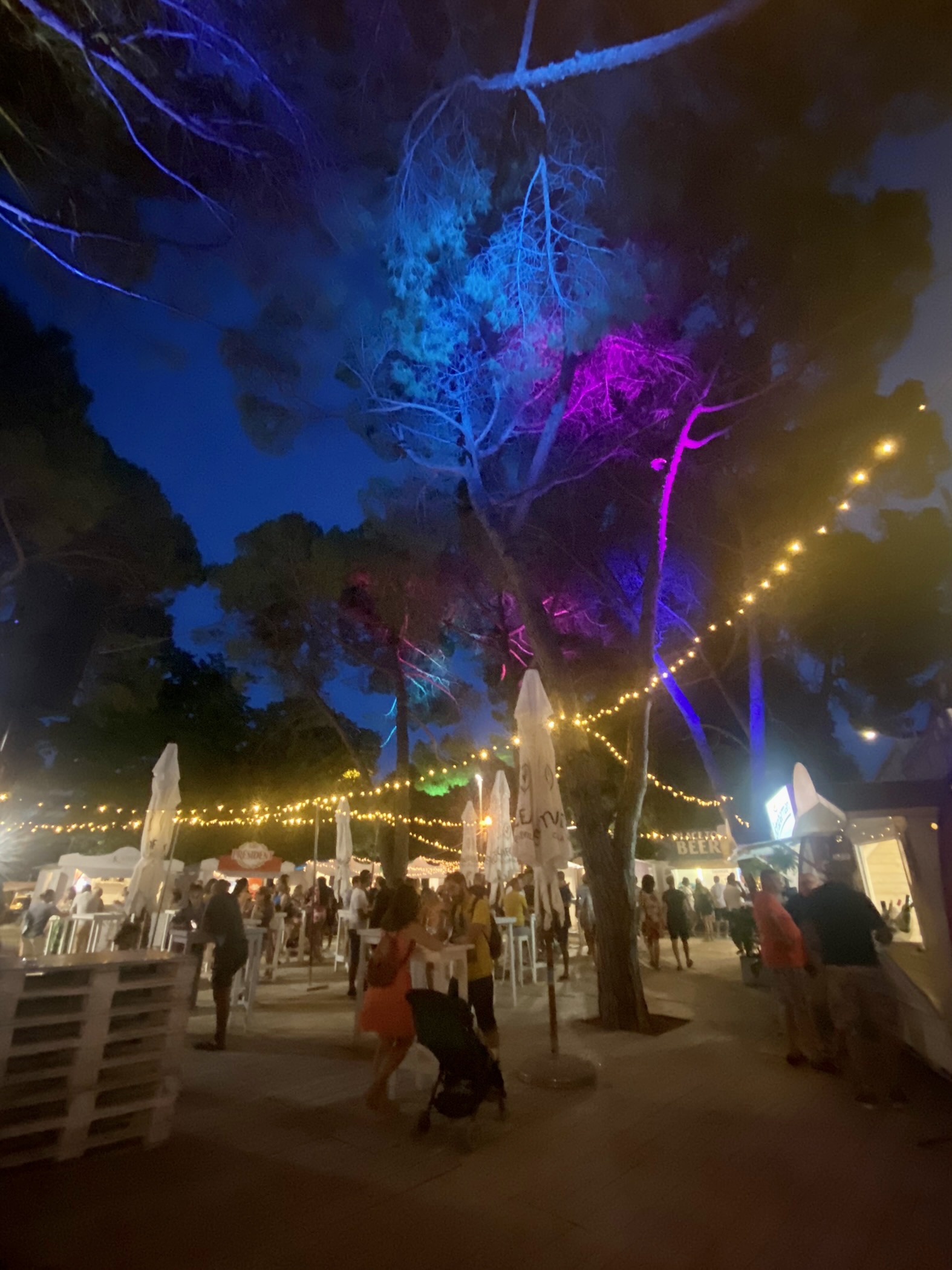
There are around 20 stalls for winemakers and distributors, and each stall offers at least 5-6 different wines. The wines being showcased are from throughout Croatia, as well as some from Slovenia, Czechia, and North Macedonia. Glass pricing is around $3-4, with bottles around $10-20. When the crowds were light, we were often able to taste through the lineup before settling on glasses to enjoy. We went two different evenings, and had a concentrated immersion into the wine of the region.
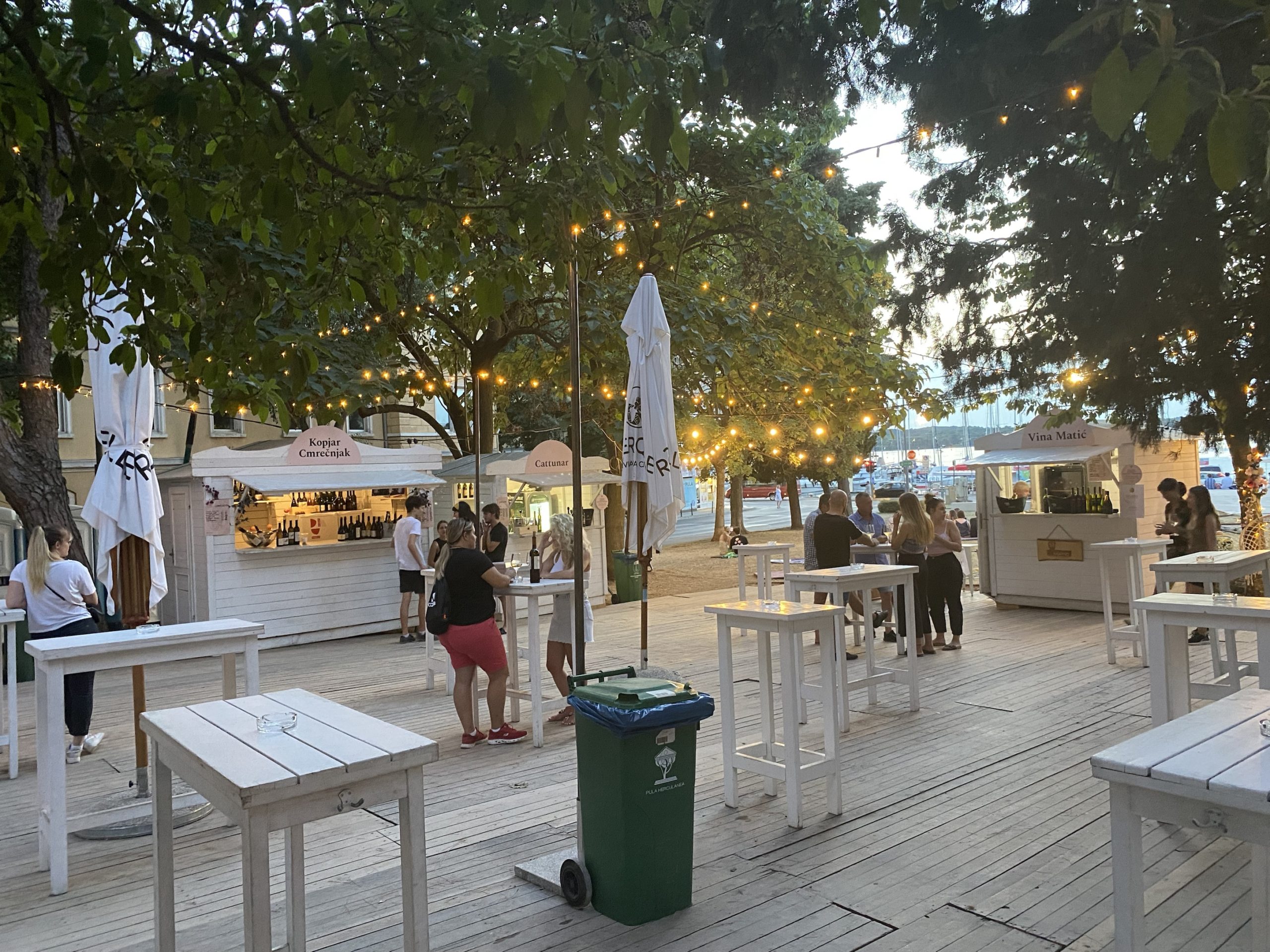
Croatia is the ancestral home of Zinfandel, and Plavic Mali (a child of Zinfandel) is the most-planted red grape in Croatia, although it is grown further south in Dalmatia, and we did not see much Plavic Mali in Pula. Our favorite wine at Pula Wine City was a Zinfandel, but one from North Macedonia. The Tikves Barovo is 67% Zinfandel (as Kratosija) and 33% Vranic (a red grape we saw a lot of in Montenegro). It was fruit-forward and everything we like about Zinfandels. It is also available in the United States, including at our favorite Seattle wine store (although at a much higher tariff once it crosses the Atlantic)!

Our rental
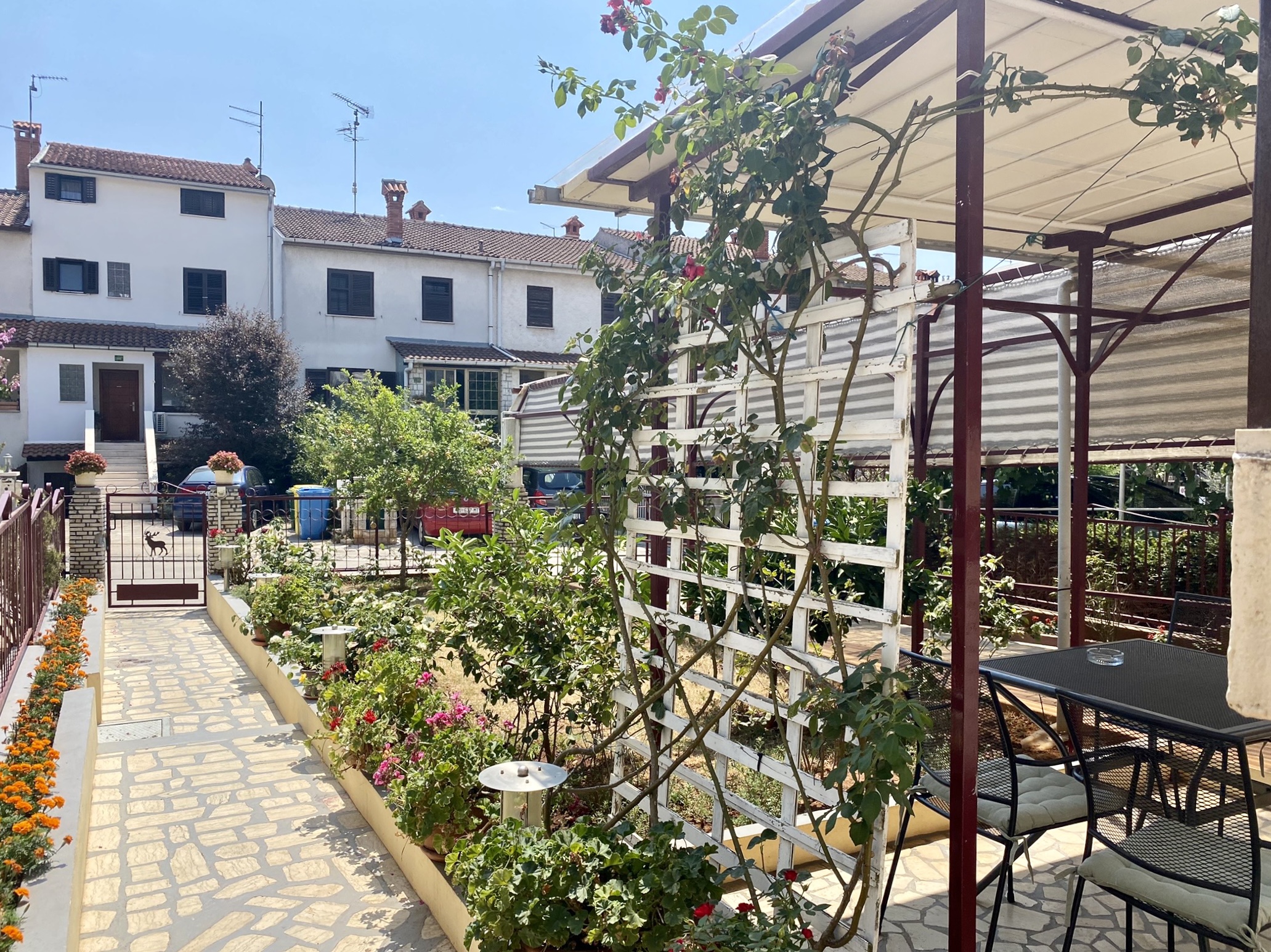
We rented a cozy apartment through Airbnb. It had a small kitchenette, WiFi, air conditioning, and a washer. We enjoyed eating at the little table outdoors in the garden and catching up on laundry.
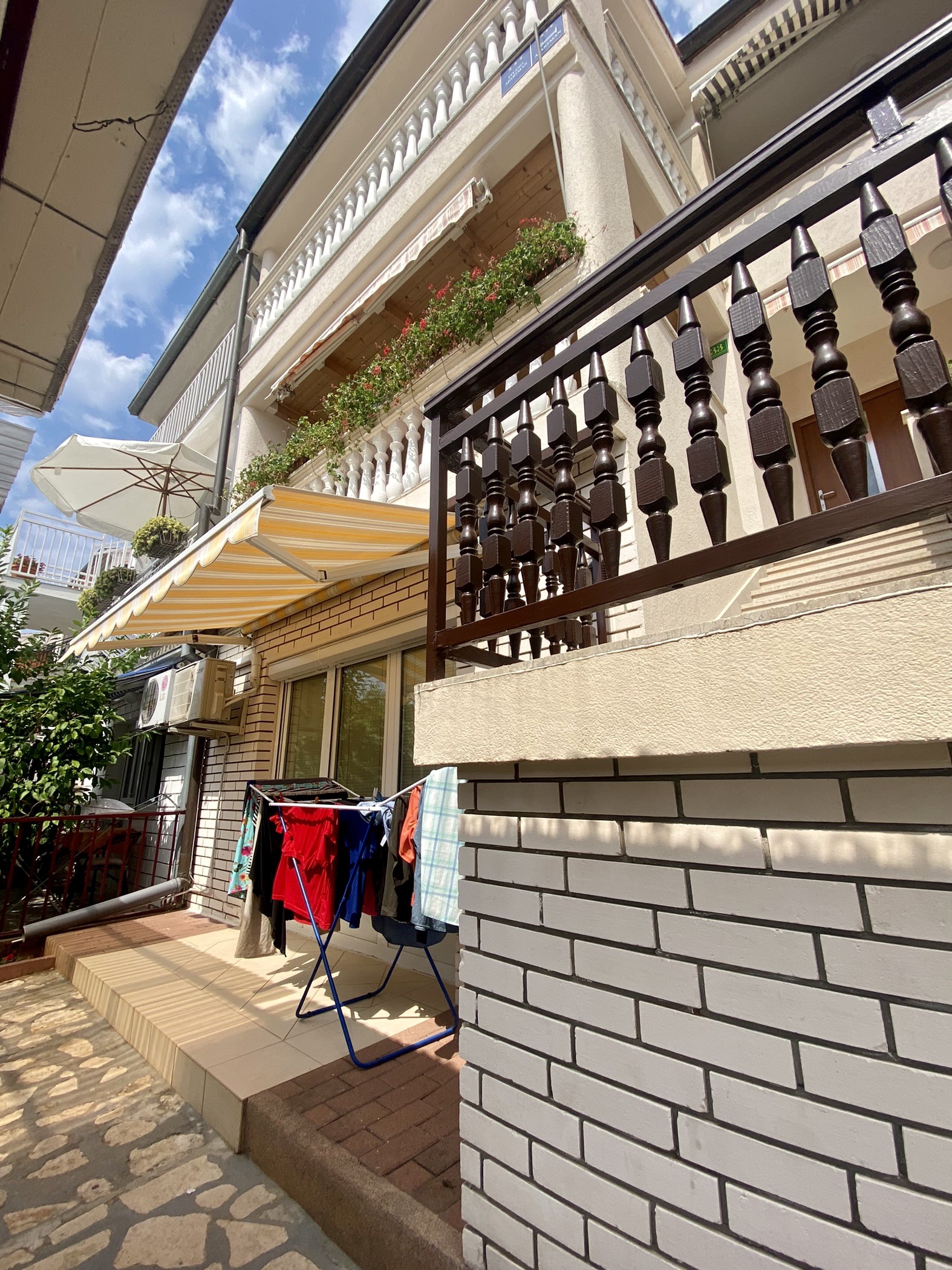
It was in a great location halfway between the beaches and city center in a quiet residential area. There were some restaurants, bakeries, and cafes nearby and a 30 minute walk to any particular point of interest. It was way too hot to walk so we got around using the public bus.
Getting around
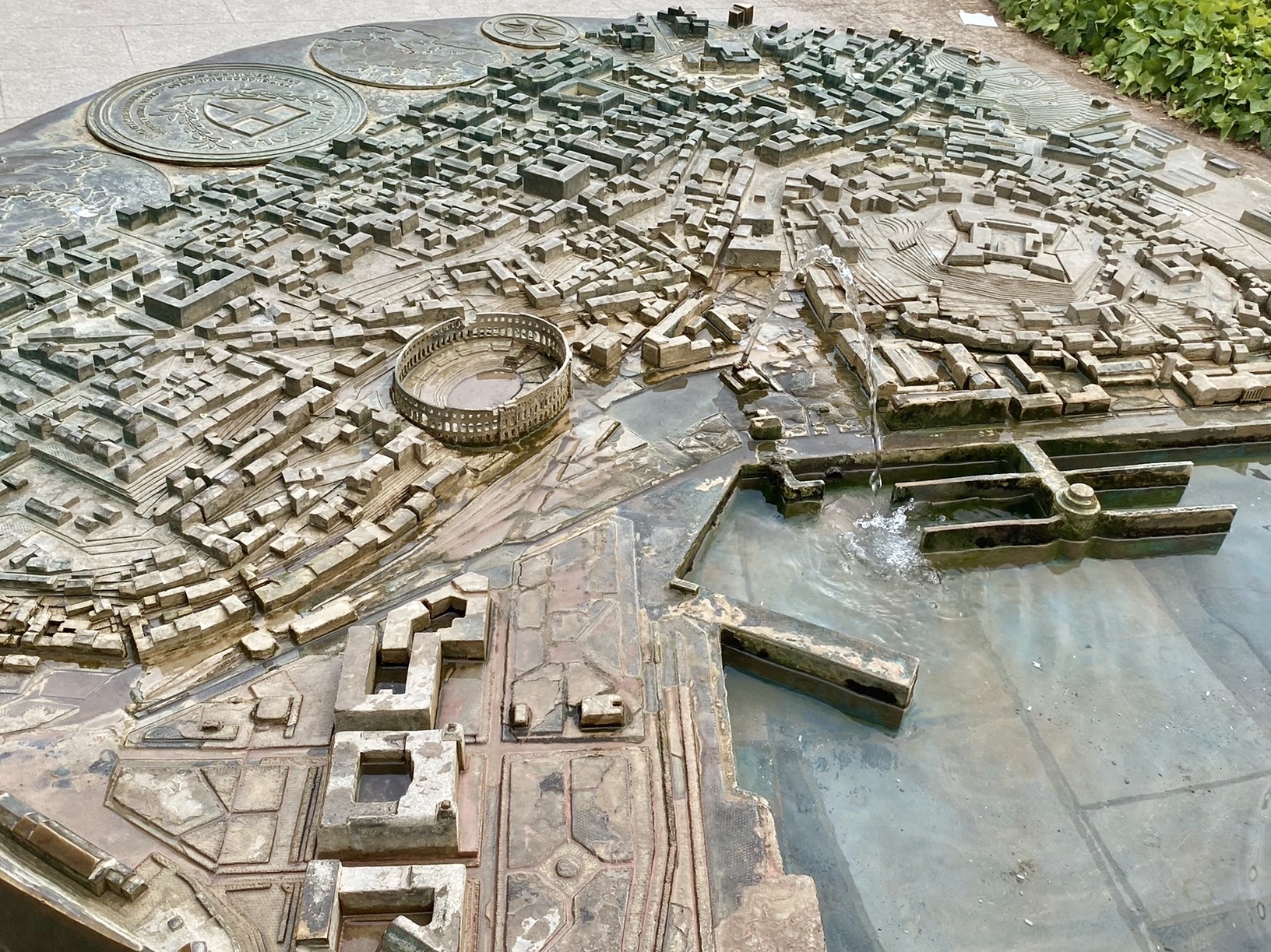
The public bus system in Pula was generally reliable. An inexpensive shuttle runs regularly from the airport to the central bus station, where the local public bus lines are frequent. While there is a prepaid card option for the buses (offering a significant discount per ride), buying and refilling that card each require going to a physical office. So we paid cash to the driver each ride. The drivers have change so that option was simple.
In many cities, Google Maps successfully incorporates the bus timetables, but we found that this was not the case in Pula, where the algorithm would often send us to a less-convenient stop, or identify bus times that did not correspond with the actual buses. Trying to decipher the official timetables was also difficult. Fortunately the buses ran frequently enough that with a little common sense, we were usually able to get to a close-by stop where a bus would come within around 15 minutes and cost about $1 per person for the in-city journey.
Croatia has miles of beautiful coastline, and Pula is an example of that. Just don’t expect sandy beaches!
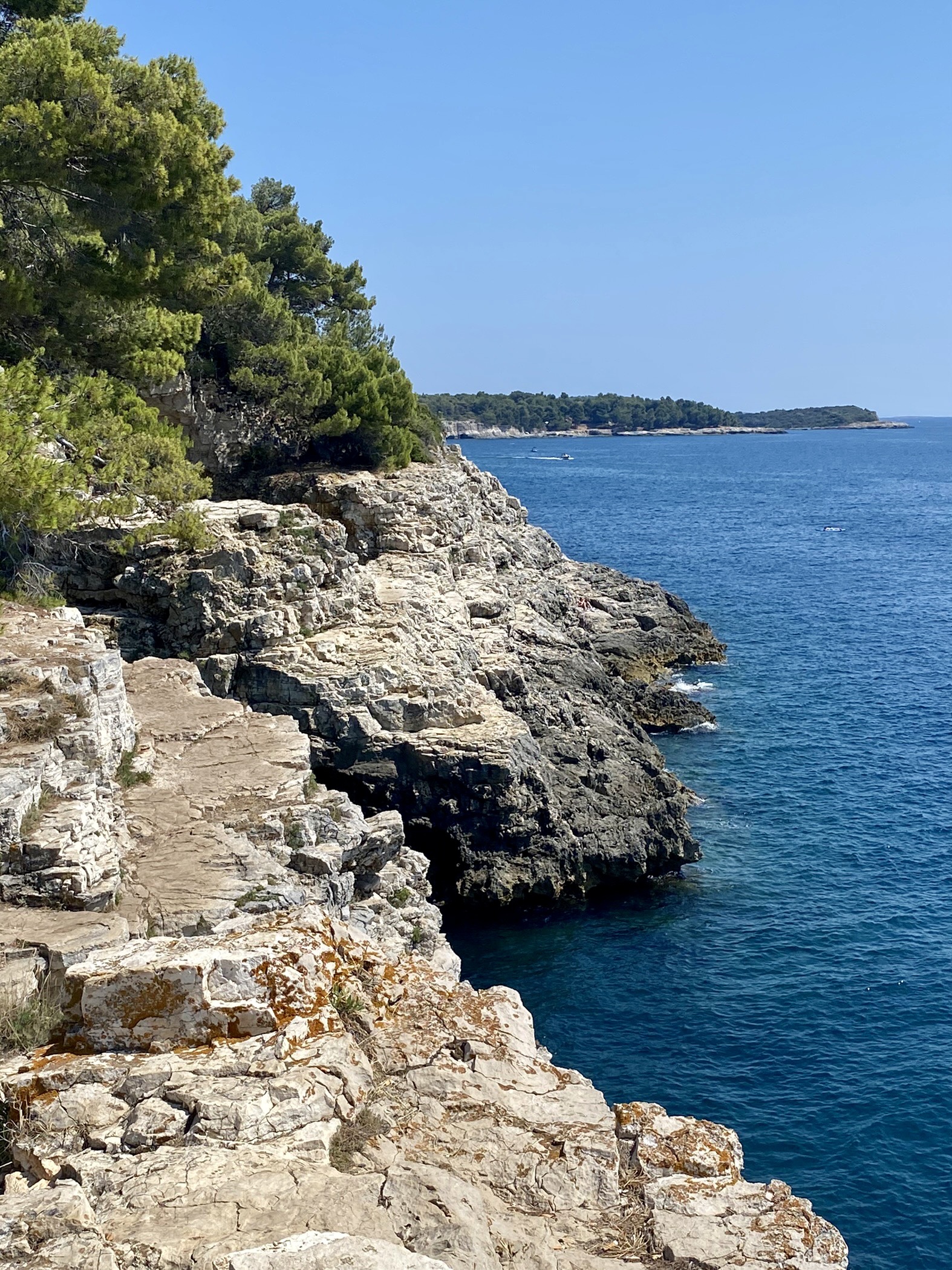
We had a great time swimming in the sea regardless. The biggest highlights for Tammy included the food and wine. We lucked out to be in town during the wine festival and we enjoyed every dish we ordered at the local restaurants!
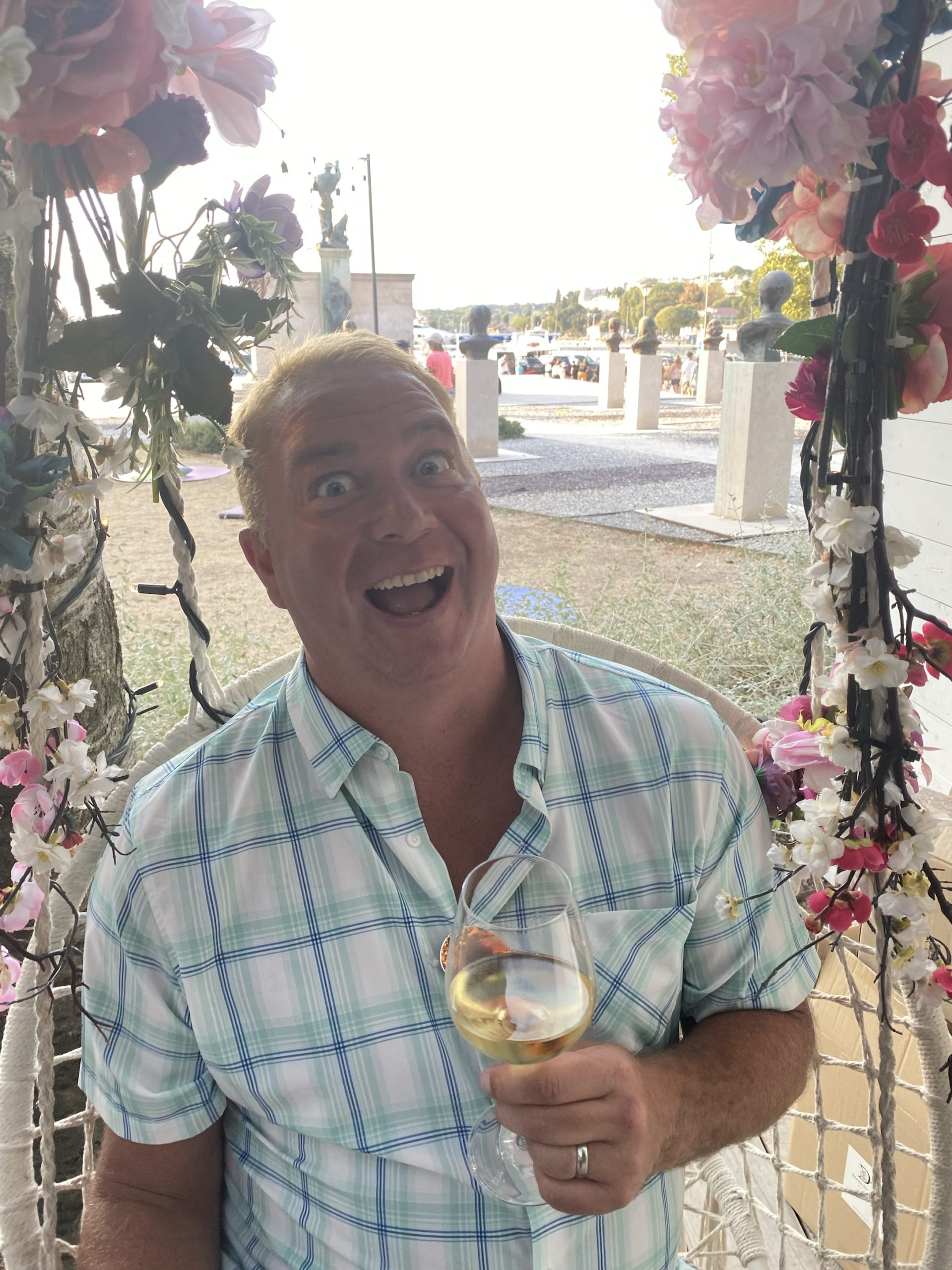
What a lovely place Pula is! Thanks for putting it on my radar. I have been to Croatia but only for a few days exploring mainly Zagreb. I would love t go back and see Pula, as it seems full of history. Any chance why they chose Pula to build the Coliseum here but then ended up with a bigger version in Rome? Or was this just the standard design at the time? How many day would you suggest for staying in Pula?
Carolin | Solo Travel Story
We found four days to be too short to both explore and spend time at the beaches and also properly explore the sight. But it is a relatively small city, so a week would probably cover it well. If a car is possible, we would also use Pula as a jumping off point to explore the rest of Istrian Croatia.
As far as Roman amphitheaters, that was the standard design. Pompeii was built around 70 BC, Pula was completed in 68 AD, and the Colosseum in 80 AD. What I’ve read is that having an amphitheater was part of being a city in the Roman Empire, and there were hundreds of them across the Western Empire. Rome had the largest, though, fitting its status.